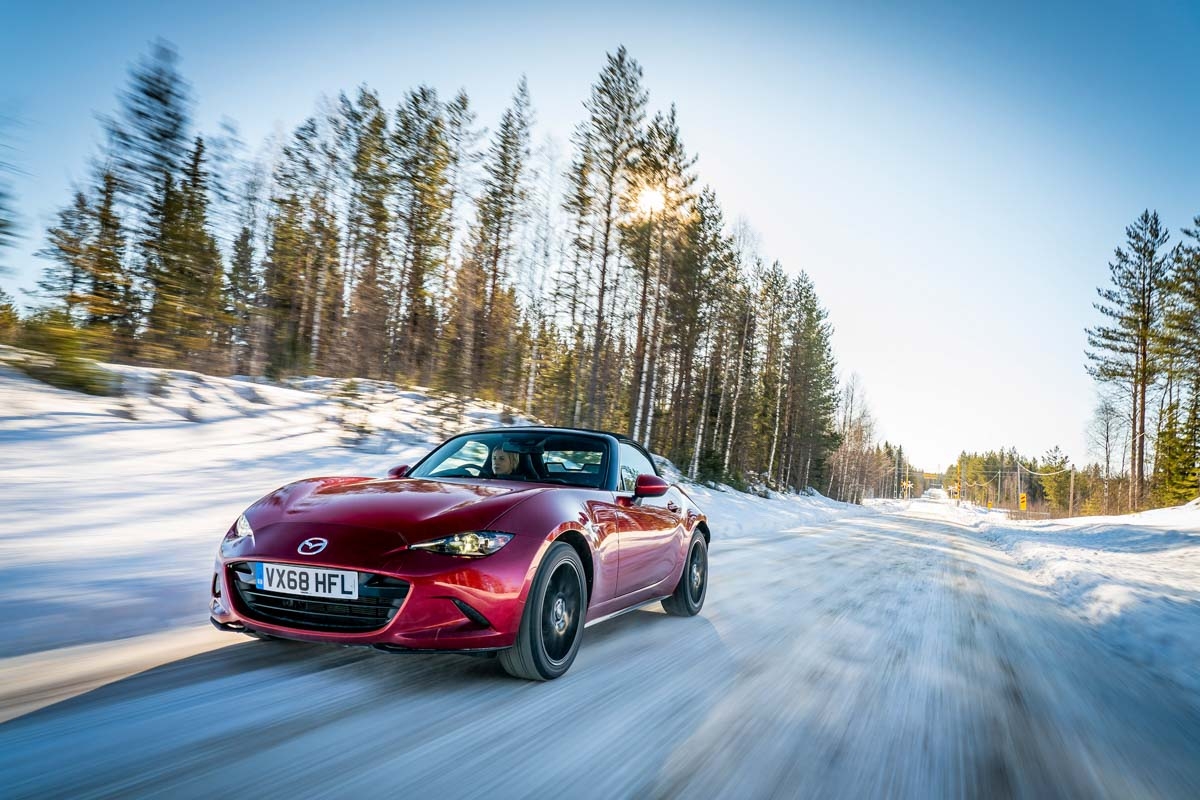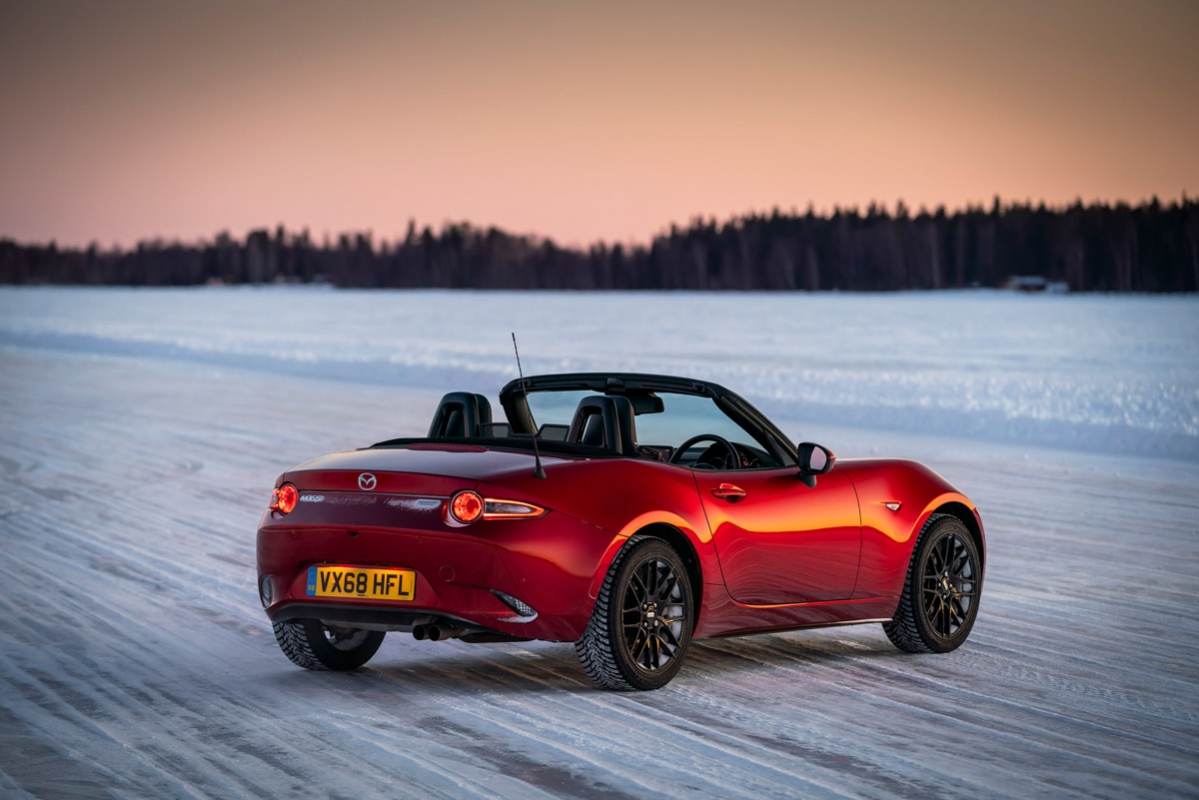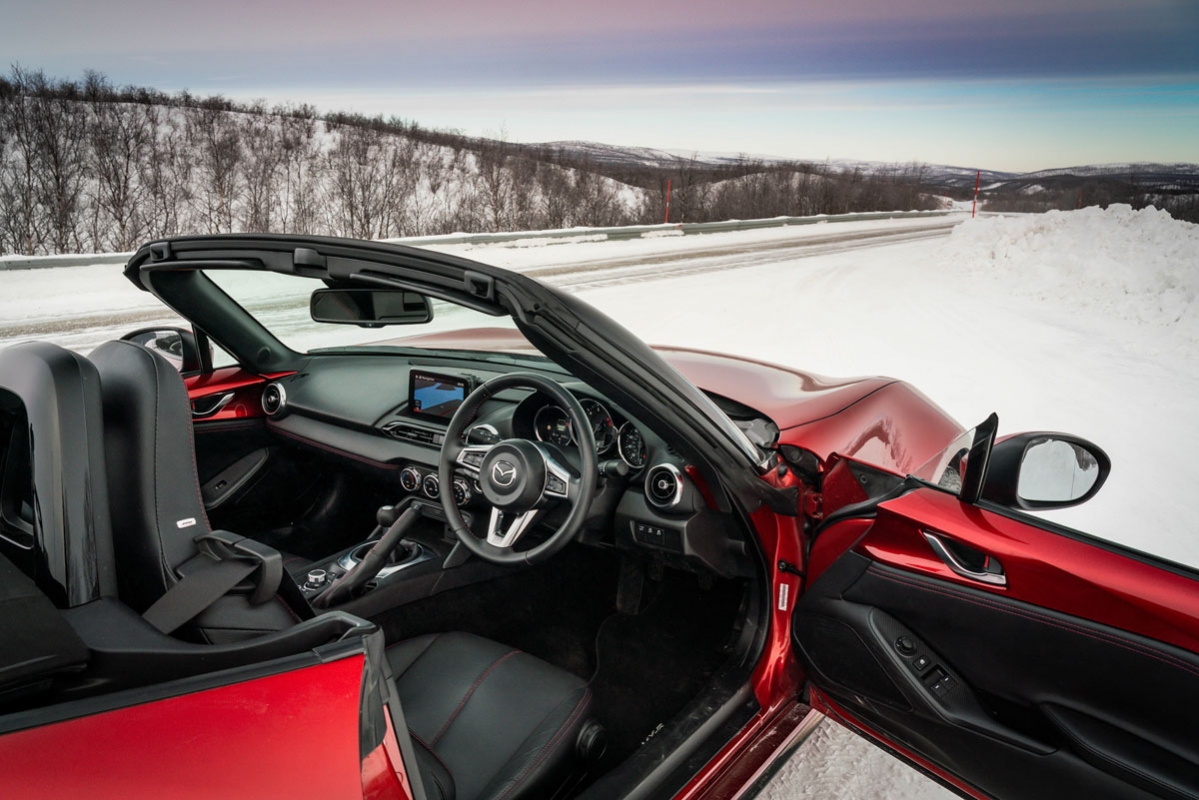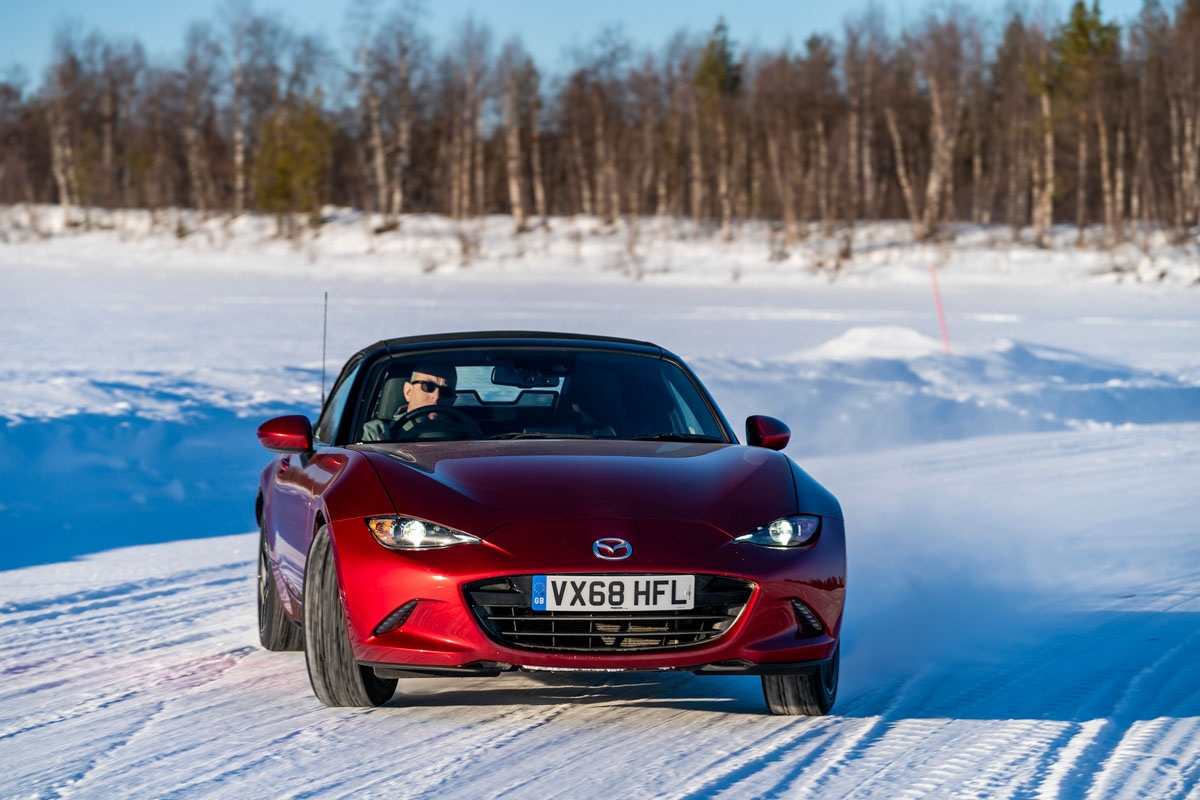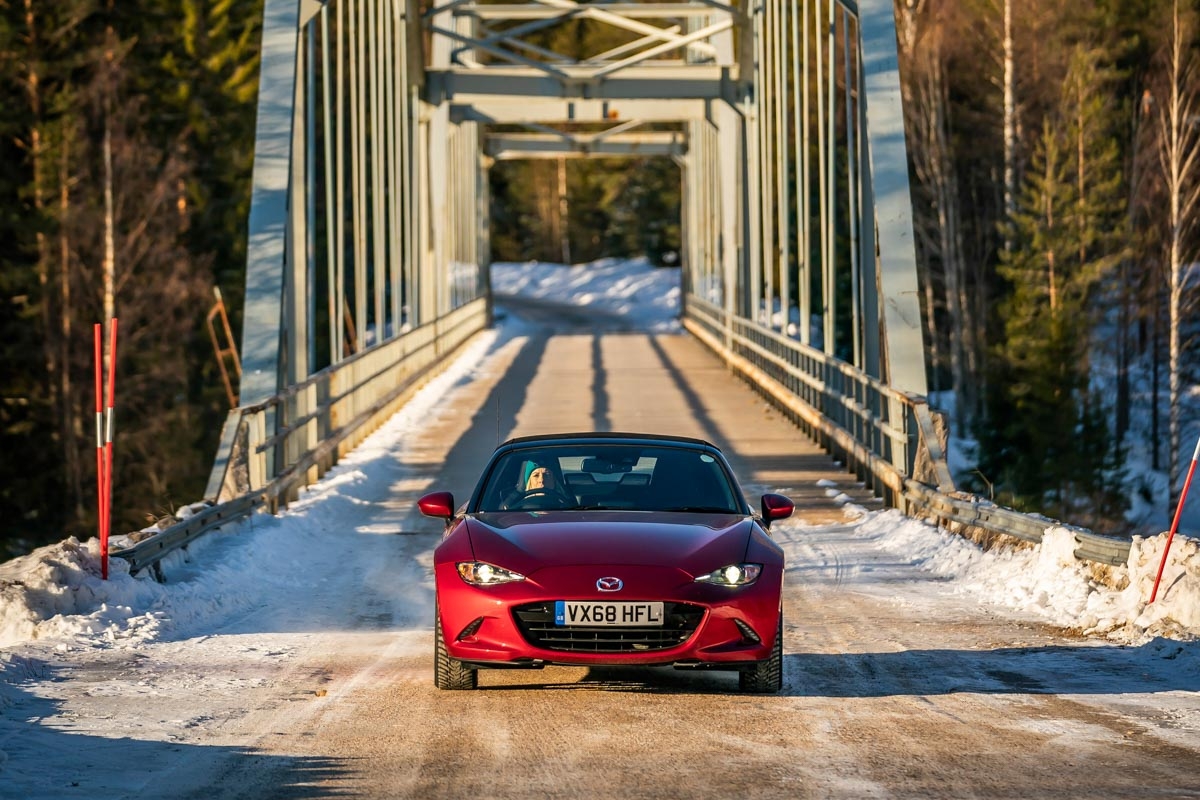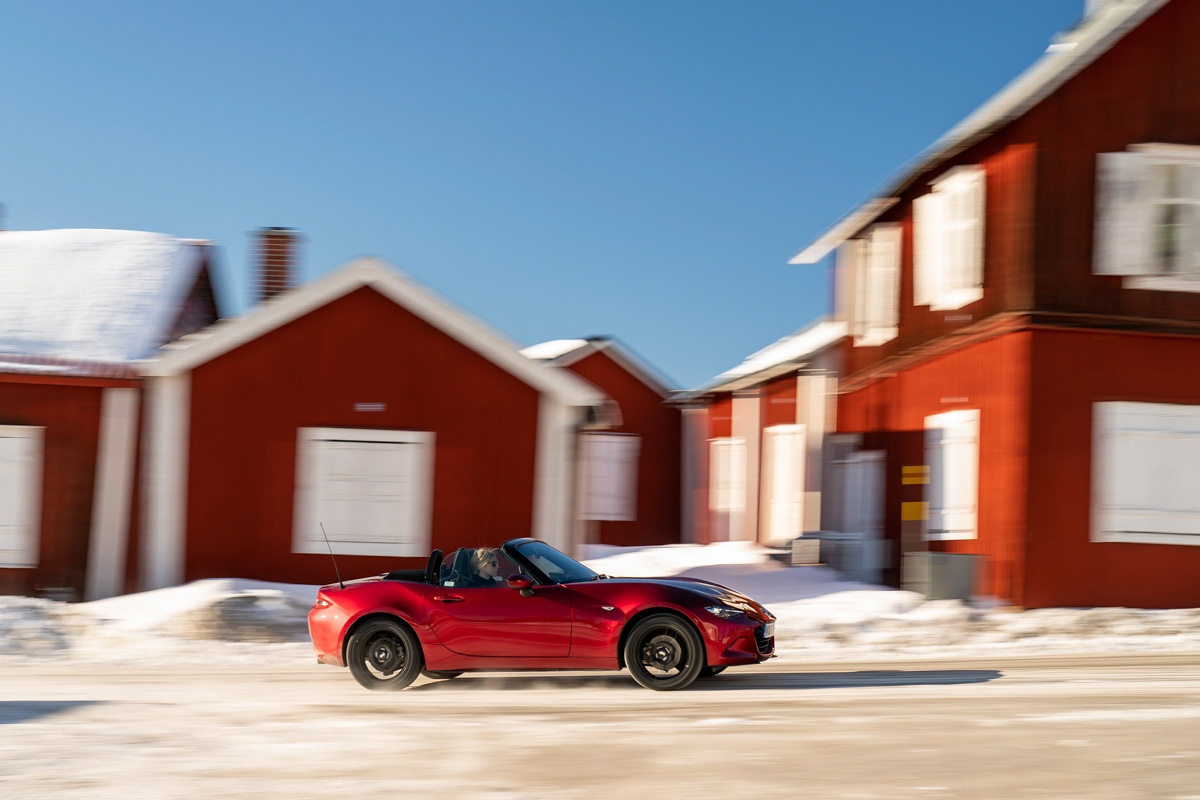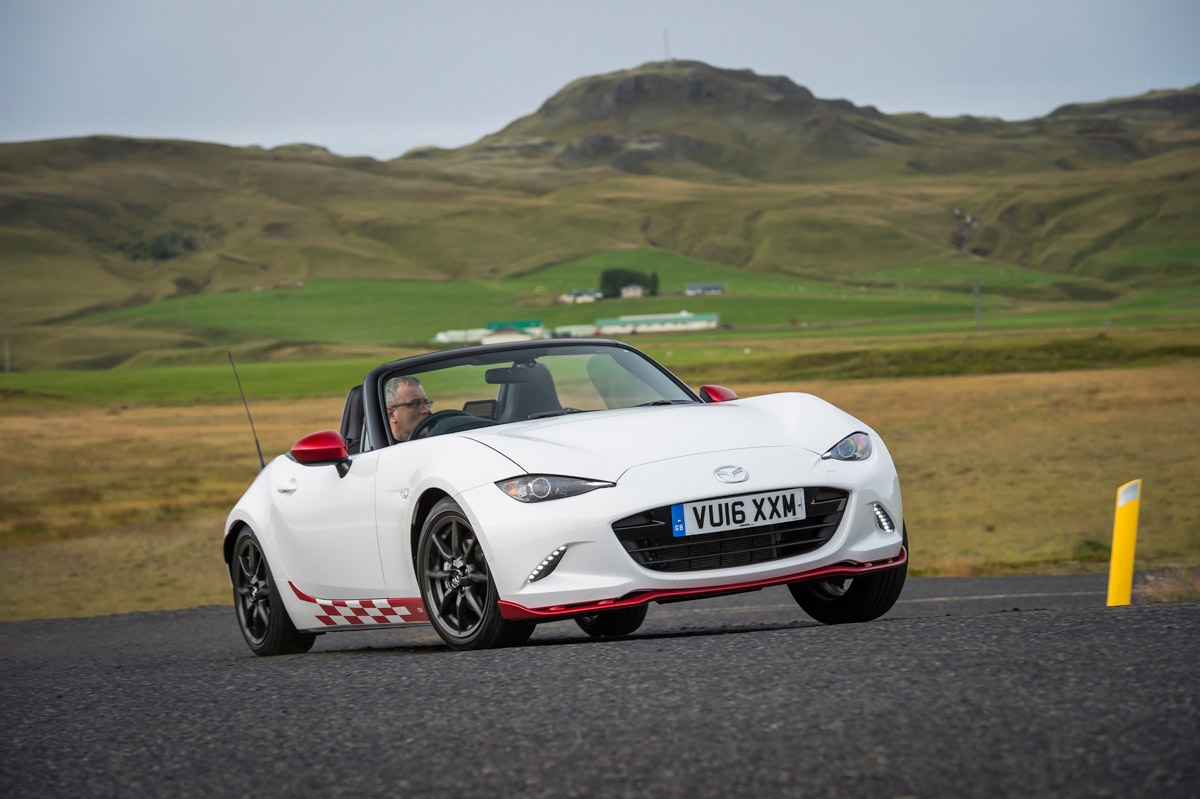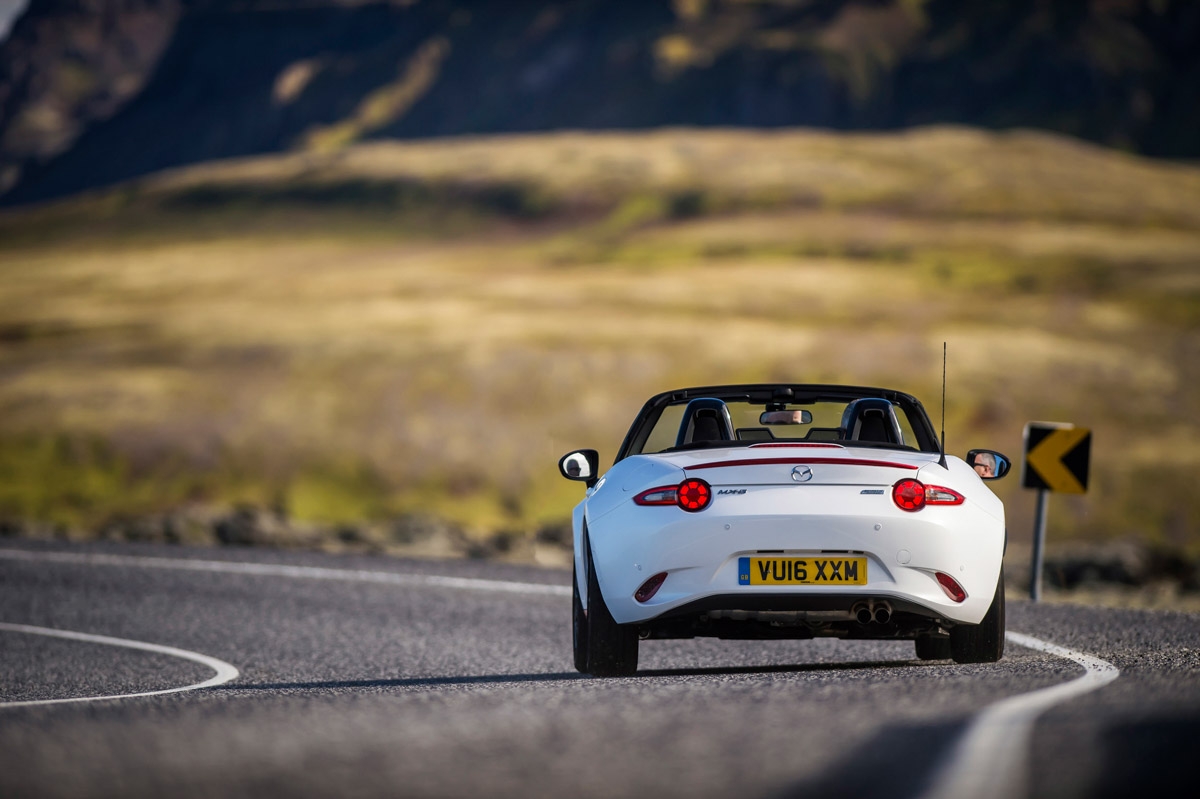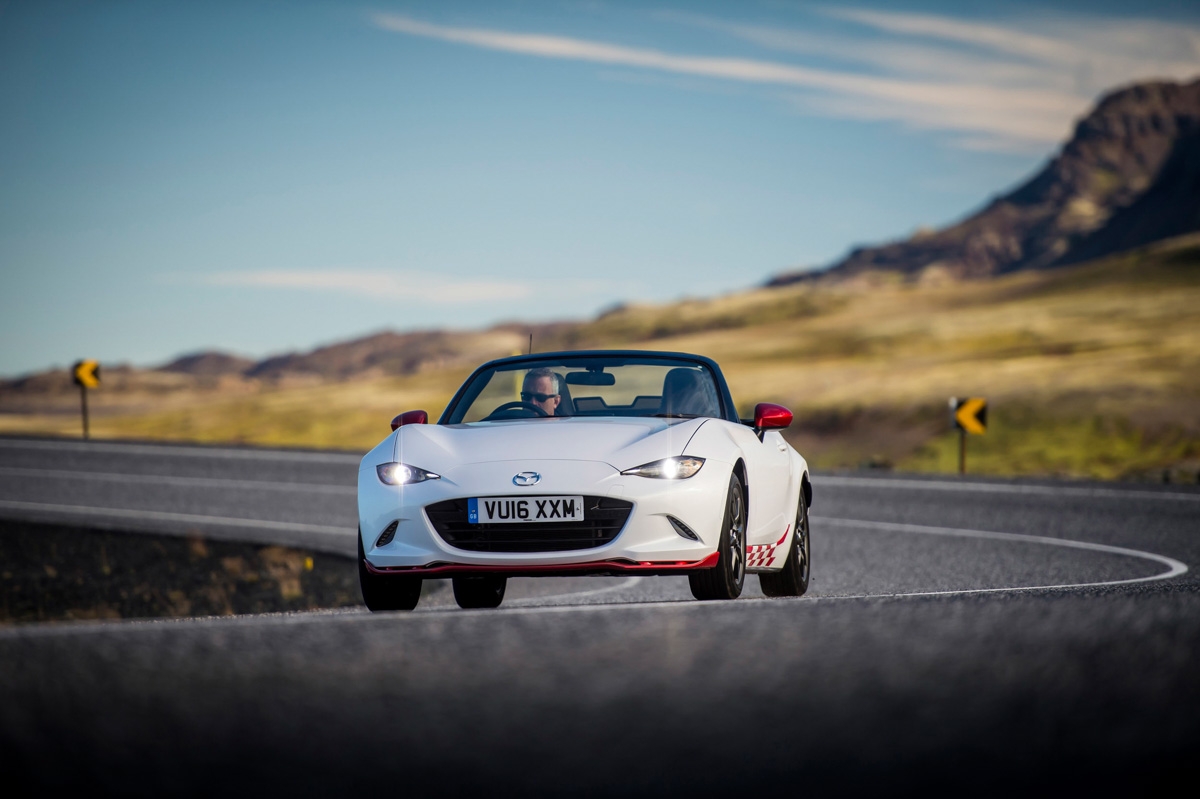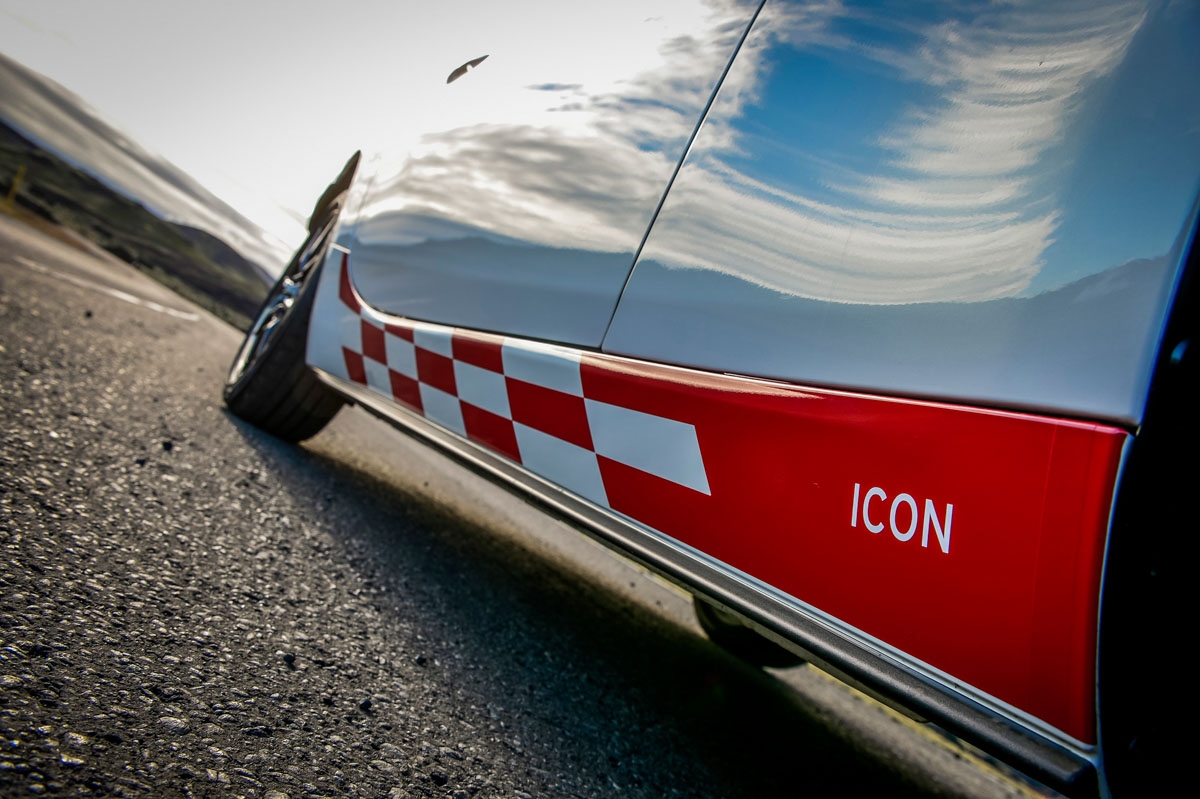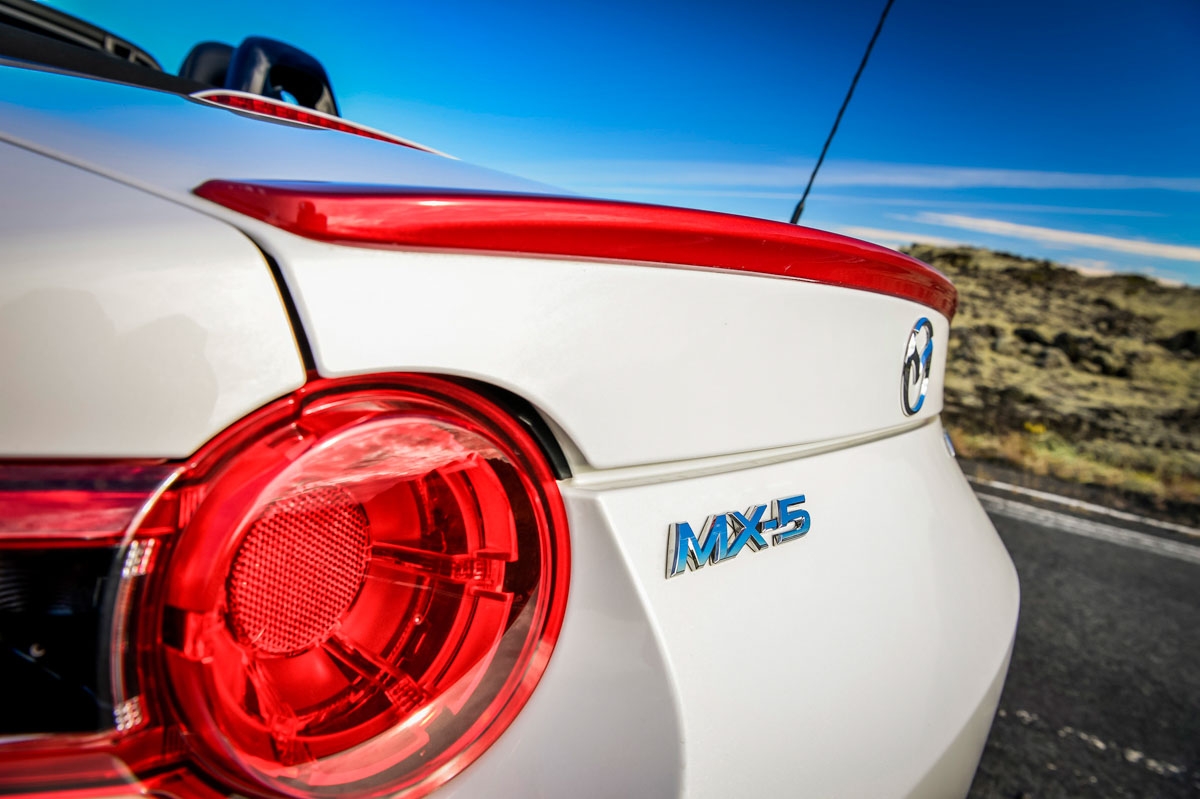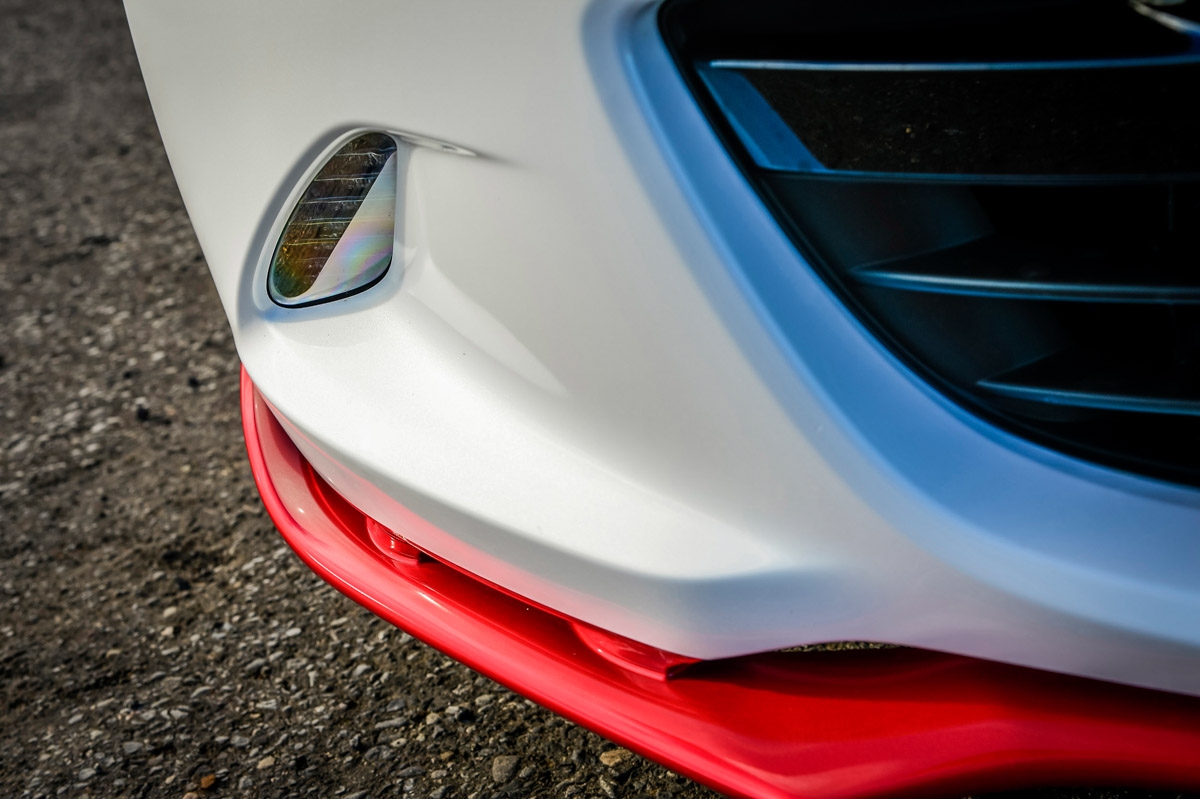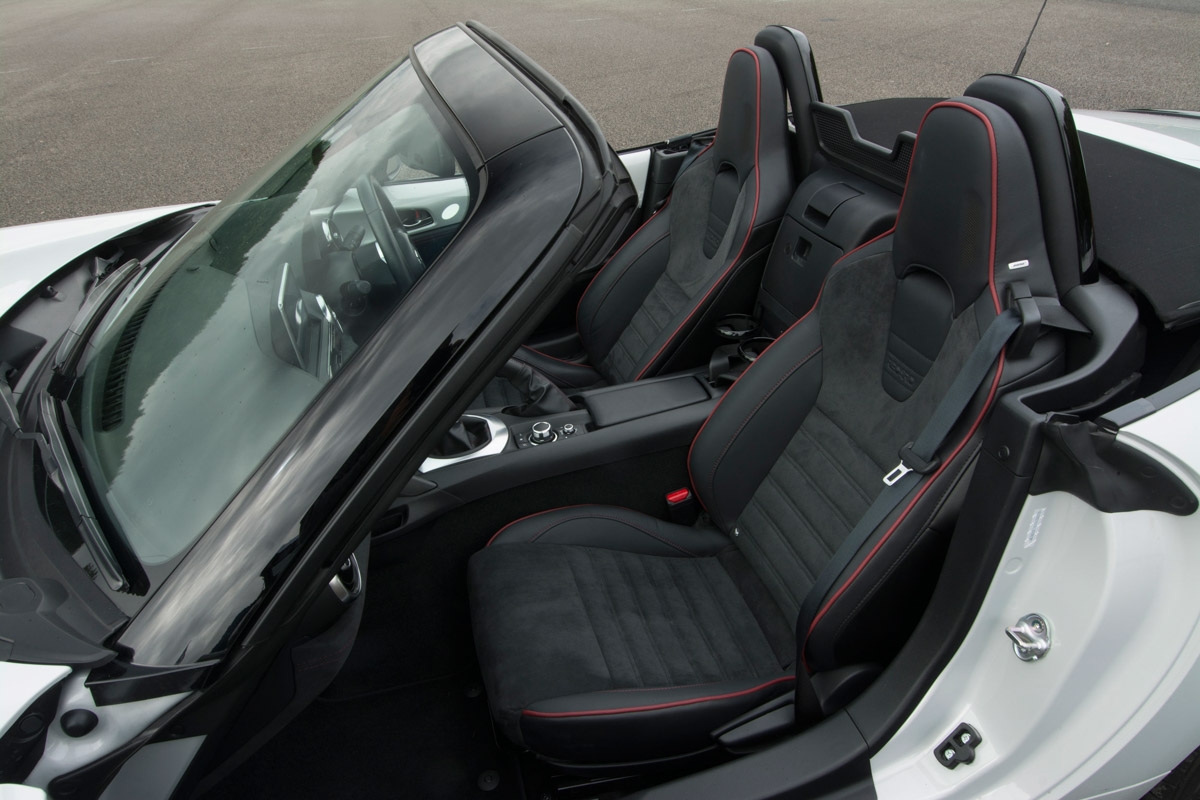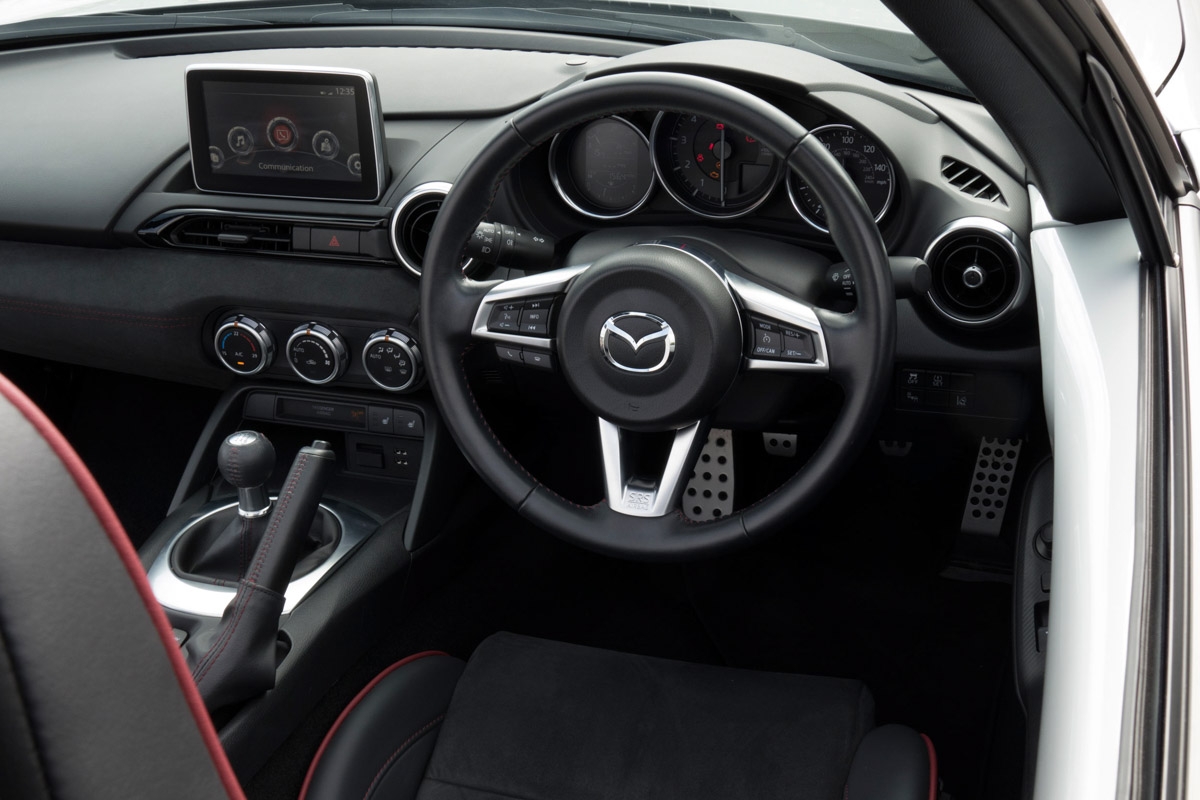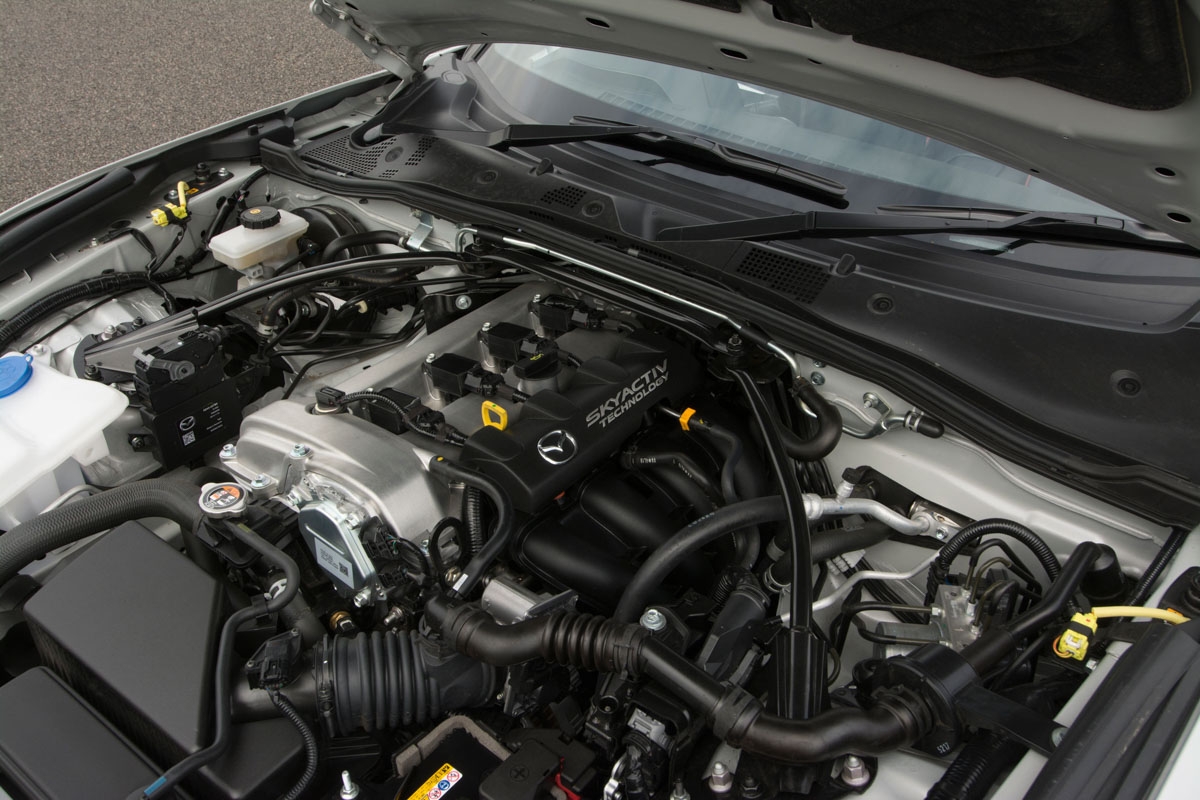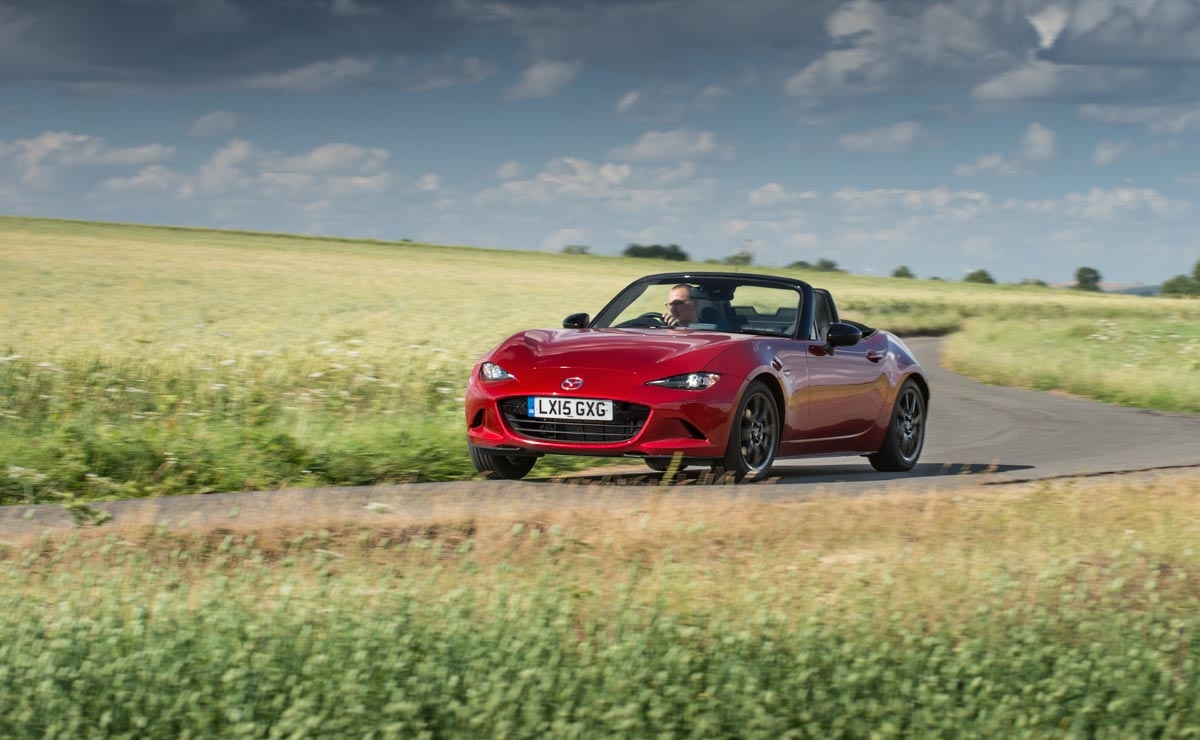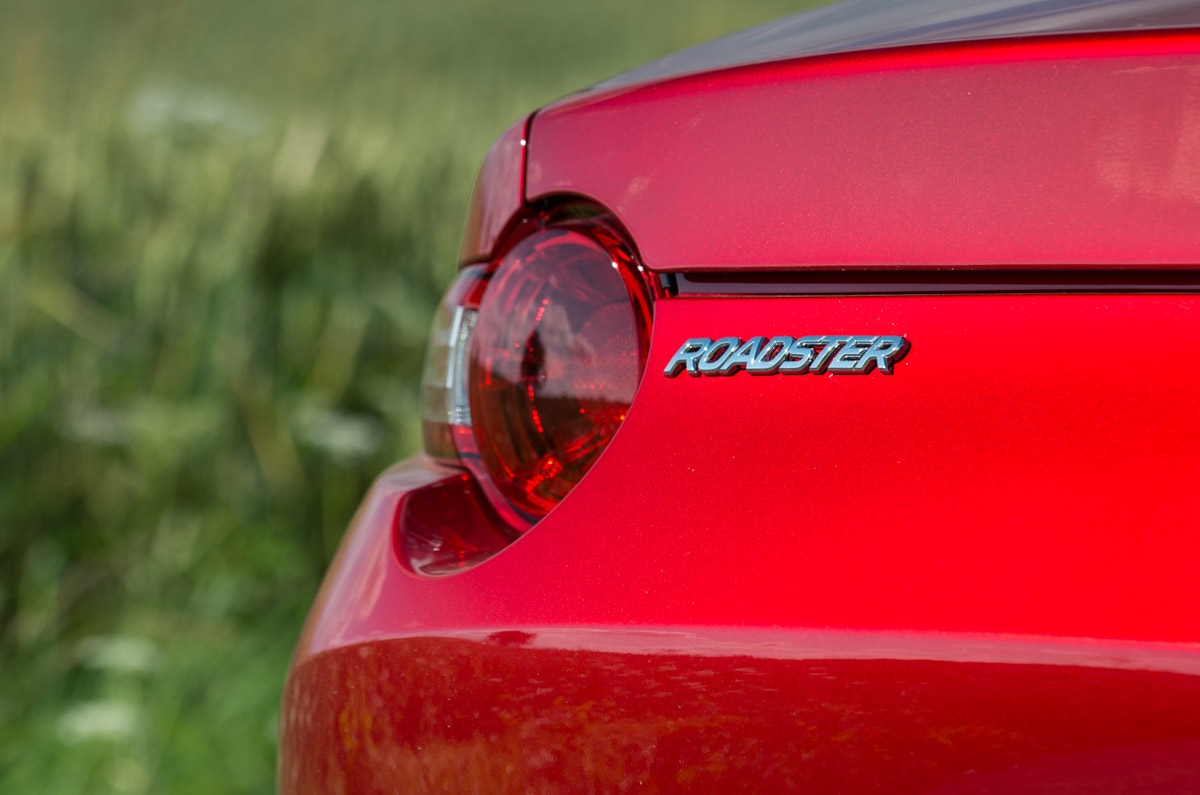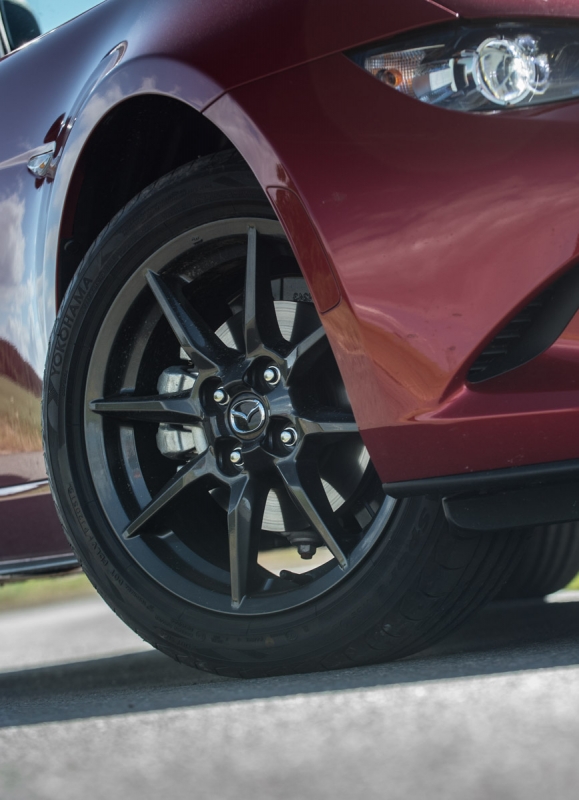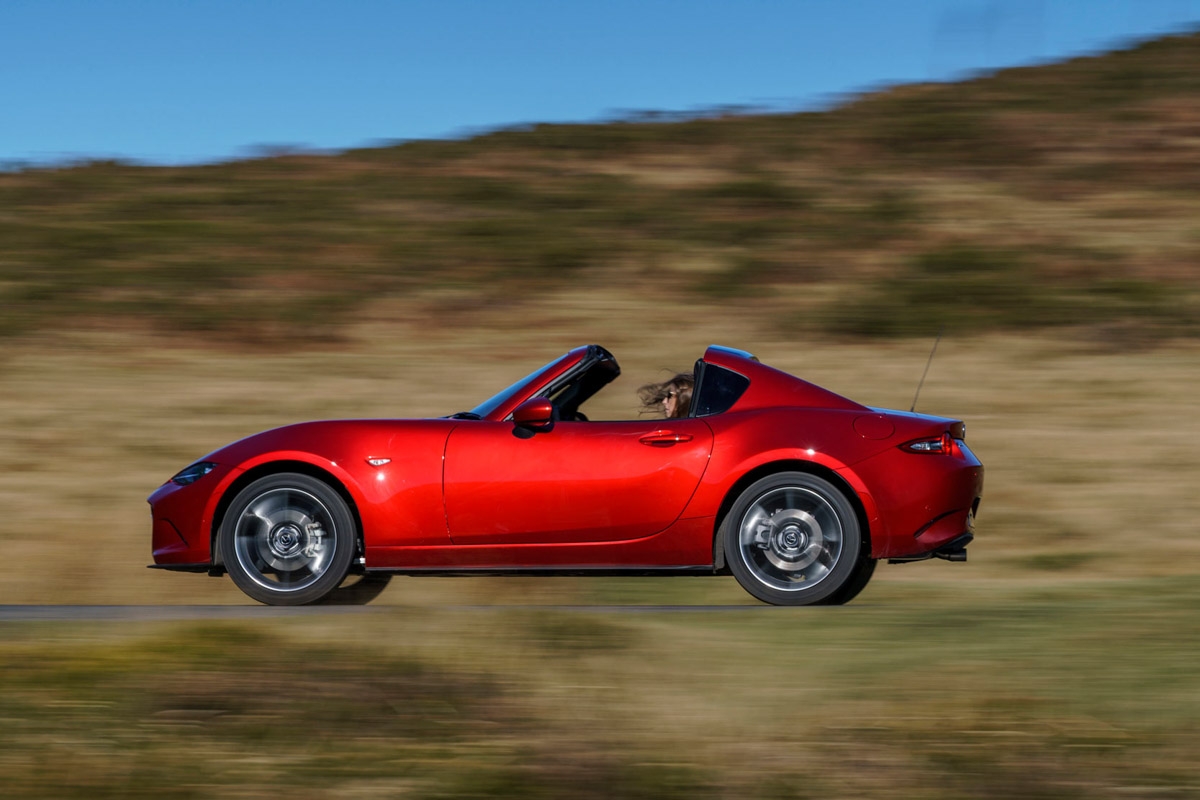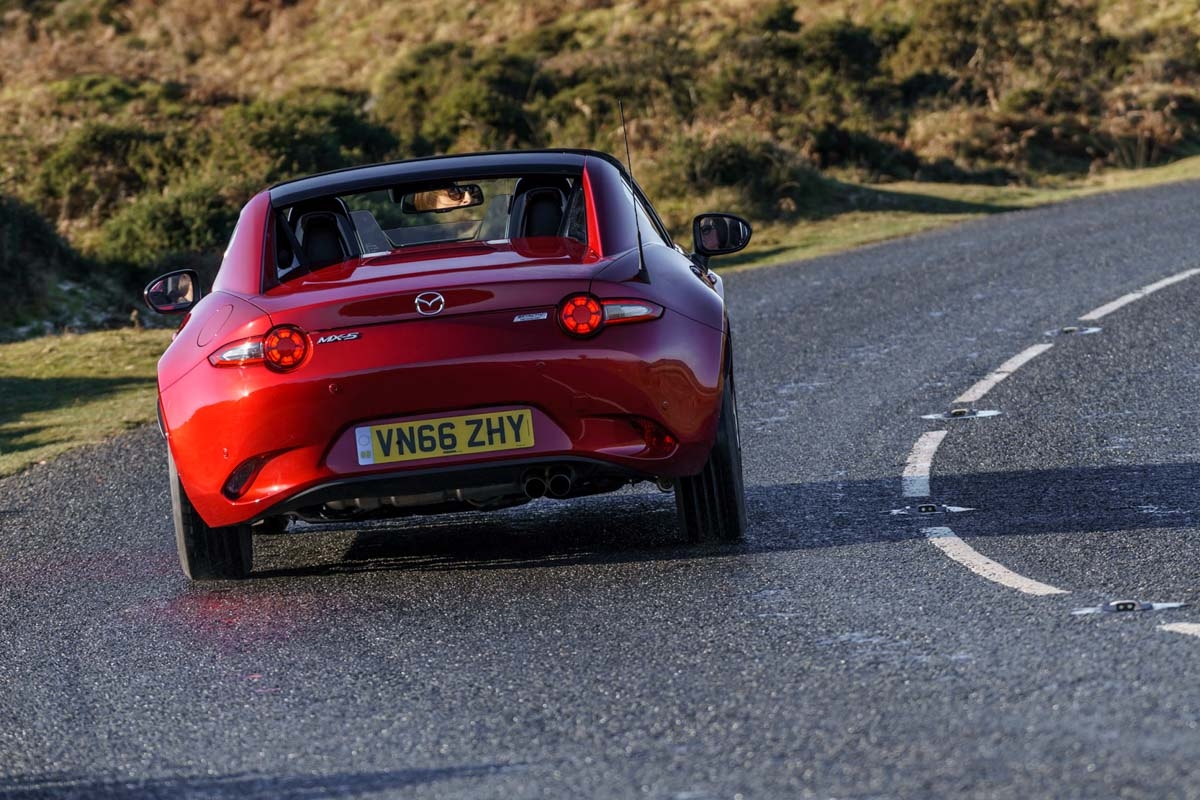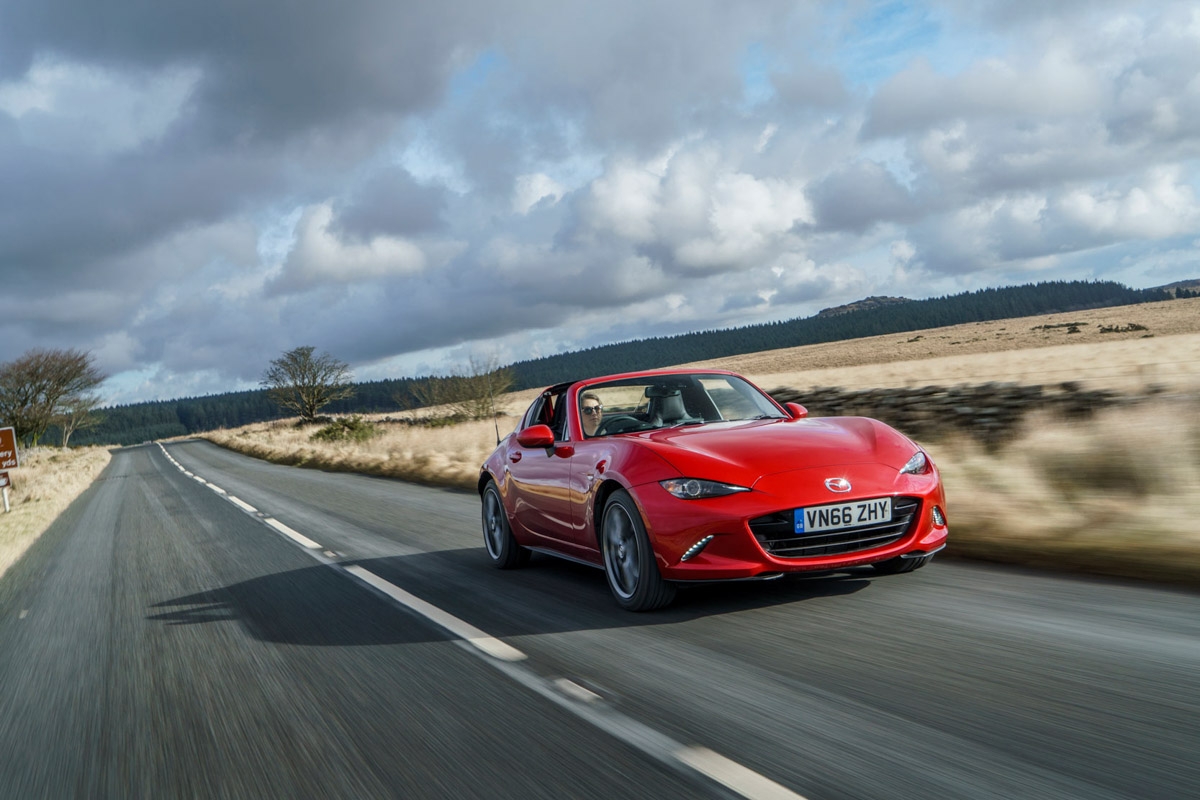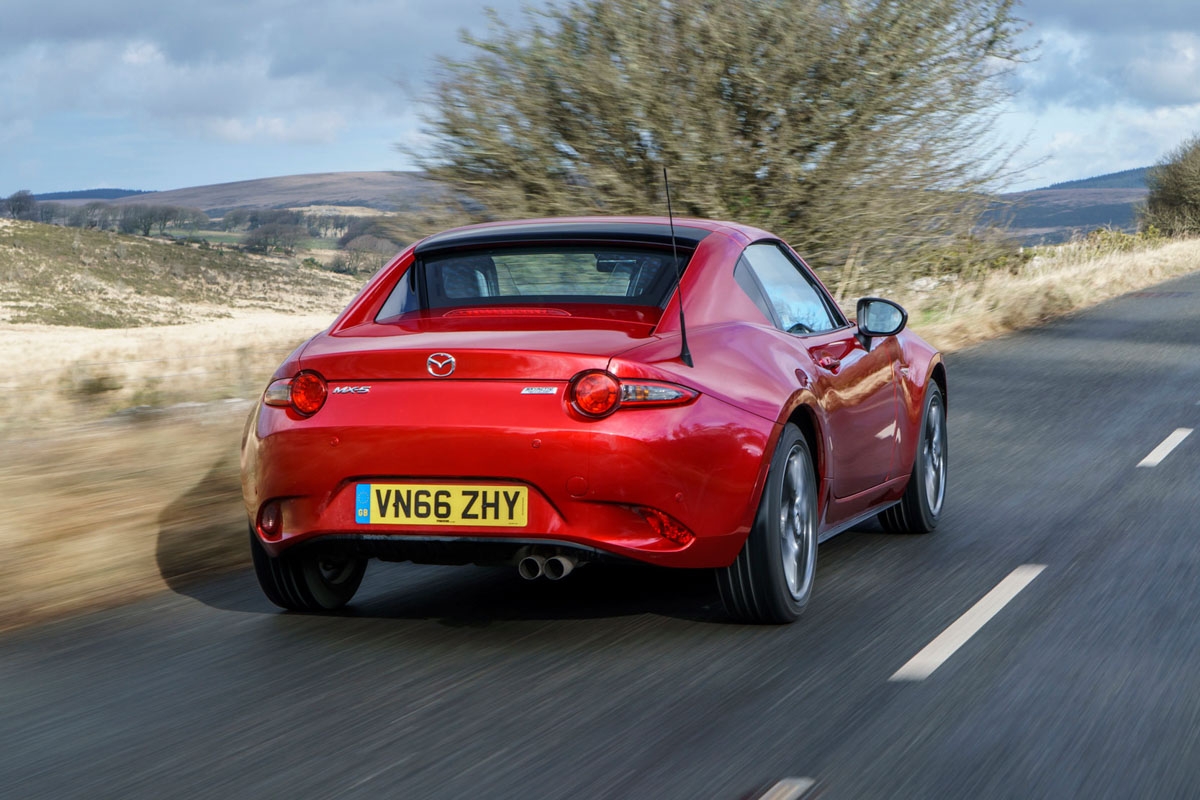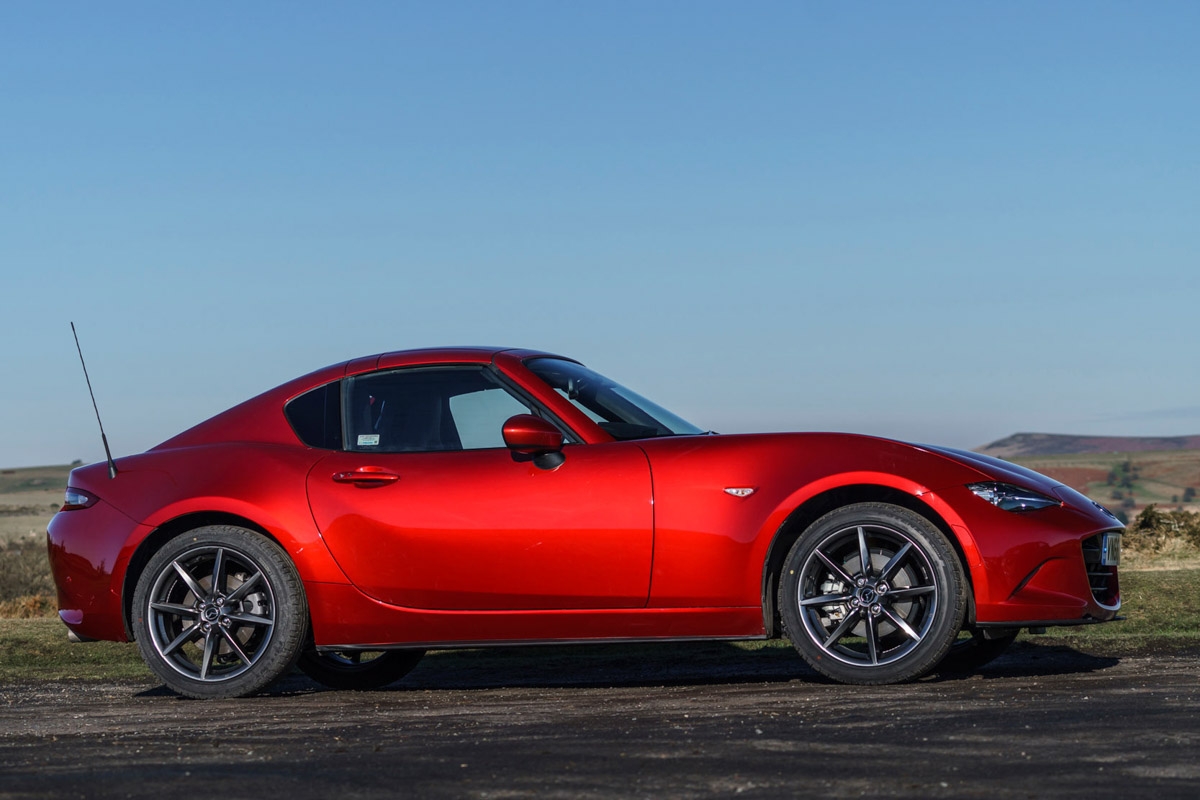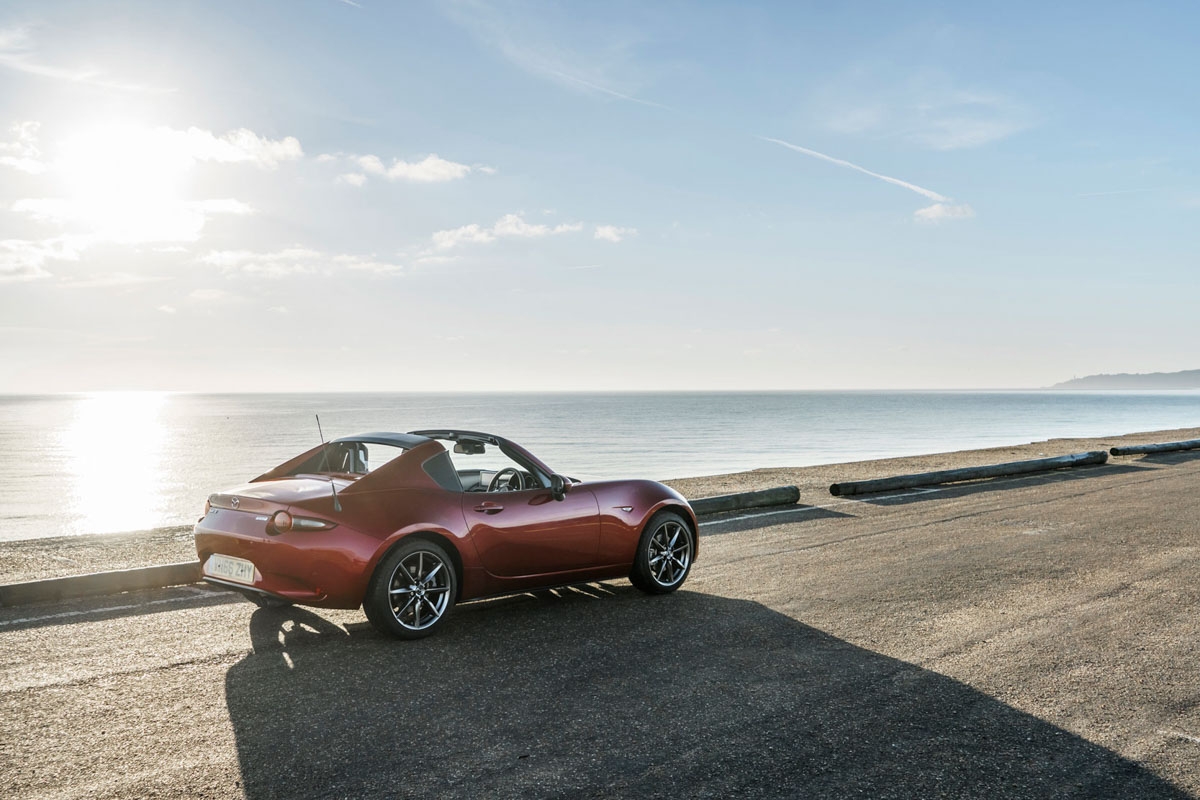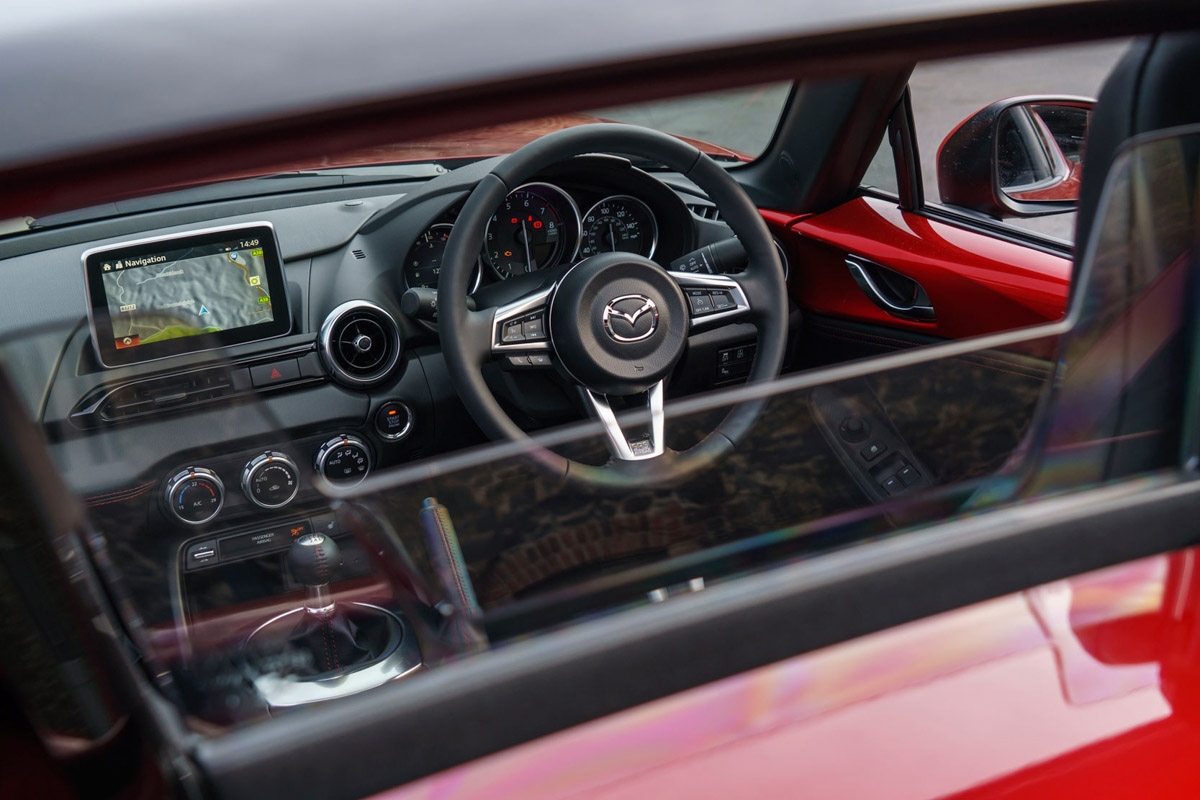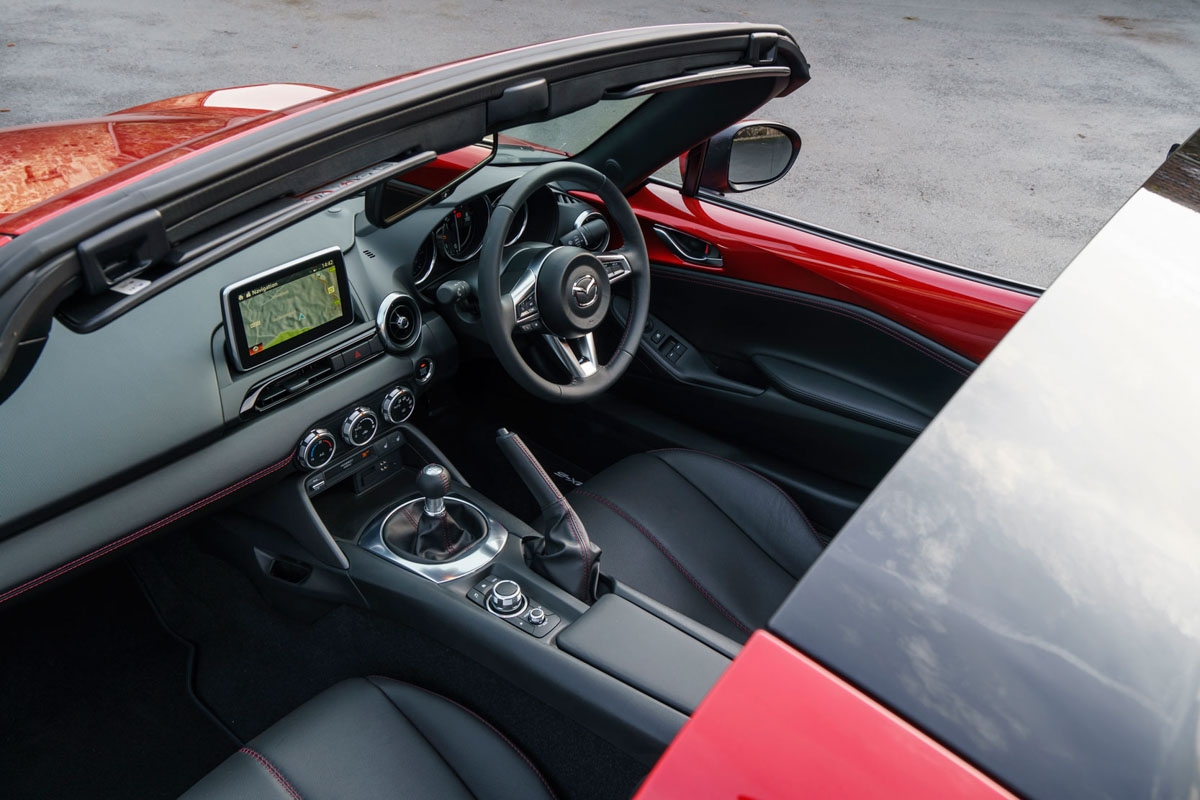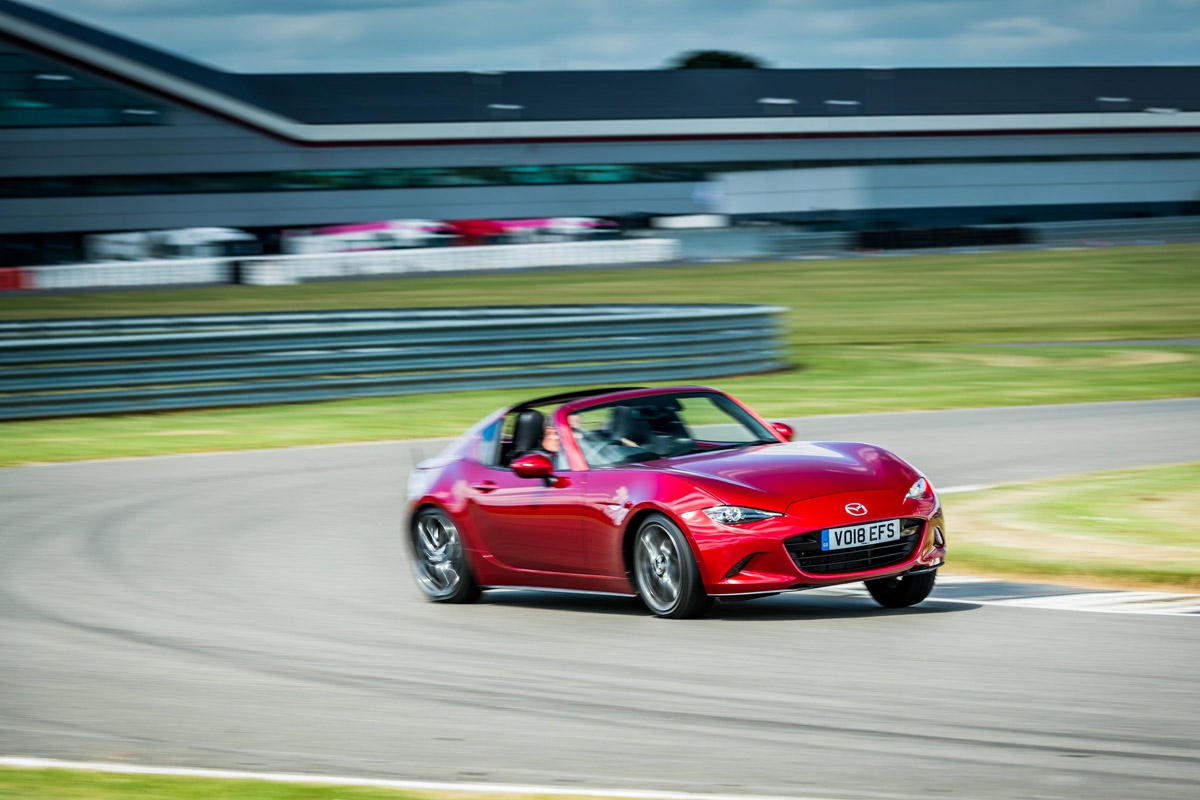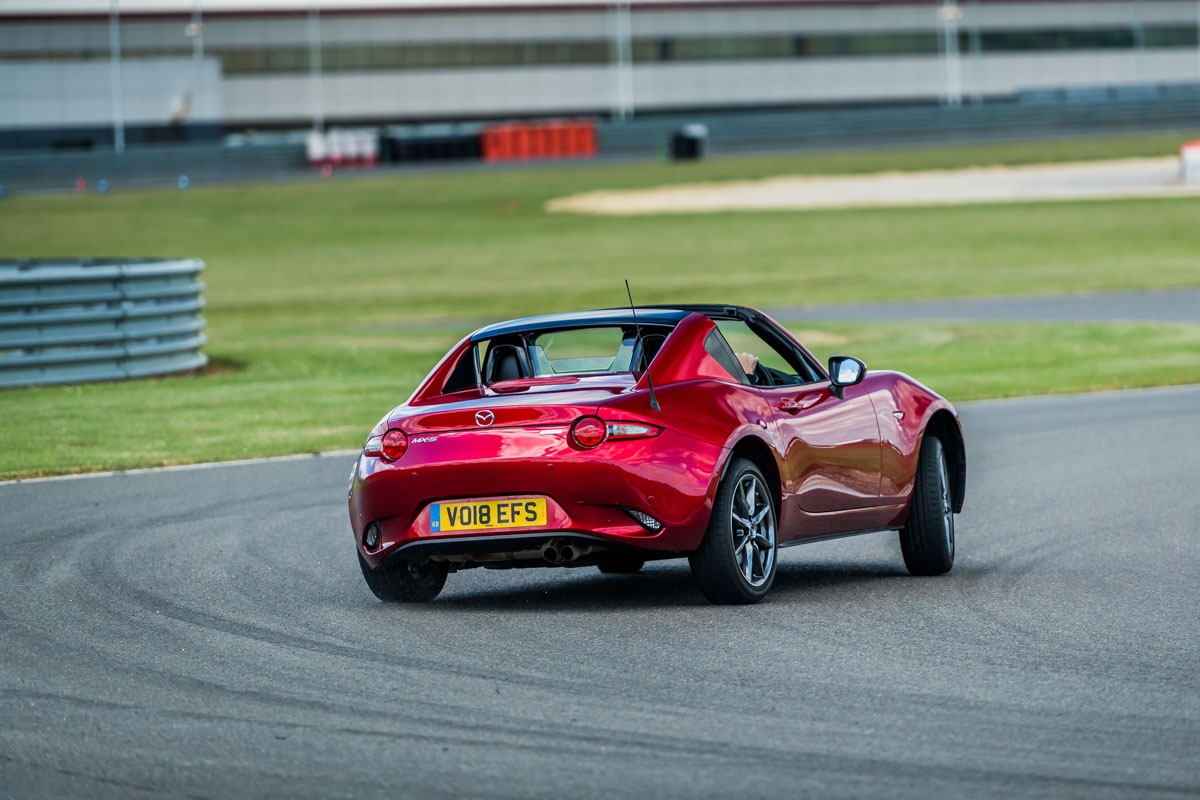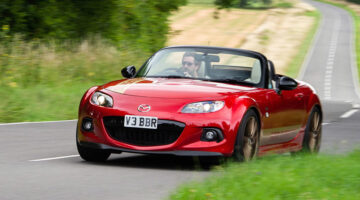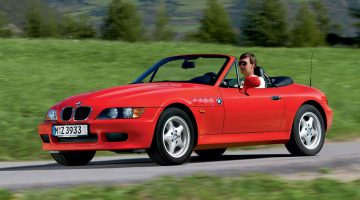The Mazda MX-5 is better than ever, a distillation of the sports car that has matured into a brilliant little roadster
| Sparkling new 2-litre engine, fab transmission and so much fun at road speeds | |
| Chassis’ limitations aren’t hard to find, tight cabin |
PRICE from $25,356
The Mazda MX-5. An industry stalwart and one of those cars so iconic it defines the small roadster itself, as it has done for 30 years. One might be forgiven for thinking that something with an ethos this old might feel out of touch with our modern world of electrification and SUVs, but the MX-5 is instead a shining beacon of affordable fun, with low running costs and, finally, some real class to its powertrains and design.
This ‘ND’ generation is the fourth since the car’s first introduction in 1989, and despite the changing ecosystem around it, the MX-5 steadfastly remains a two-seater, rear-wheel-drive roadster with a longitudinally mounted, naturally aspirated four-cylinder engine (although an RF model with a folding hardtop is also available).
It took us a little time to appreciate the latest MX-5. It’s rare that a modern performance-orientated car rolls so much in corners, and we were initially disillusioned with its lack of focus in a market where even entry-level hot hatches are razor-sharp and blisteringly quick. That, of course, is deliberate on Mazda’s part – the MX-5 is designed to bring driving pleasure to the masses, rather than chase lap times.
Those body movements make you feel like you’re cornering hard, even when you’re not. Drive flat-out and you’ll be left wanting more control, but drive enthusiastically down a familiar stretch of road and you feel completely involved in the experience. Helping this are the recent updates found under the bonnet, the 2-litre engine having received a thorough overhaul, adding power, and more importantly revs to the package. The raspy exhaust, and responses unsullied by turbocharging, plus a fantastically snappy gear shift all combine to make even a drive to the shops an experience worth savouring.
And you can drop the roof on a sunny day, which adds an extra dimension that few others at the Mazda’s price point can match. For those who insist on a tin-top there is also the MX-5 RF with its electric folding targa-style roof, which adds the looks of a coupe but retains many of the roadster’s attributes and quirks.
Prices, specs and rivals
For 2018 a basic 1.5-litre MX-5 in SE trim starts at $23,516. There isn’t currently anything similar available for this price, with Fiat’s basic 124 Spider starting at over $26,000. Perhaps closest in spirit and in driving dynamics is the Mini Cooper Convertible, at $24,500, though there are a selection of roll-back fabric roof ‘convertibles’ available for less, such as the Fiat 500C and Smart Fortwo Cabrio.
Perhaps a more pertinent comparison from an evo perspective is the selection of supermini-based hot hatchbacks available for similar money. Ford’s brilliant Fiesta ST starts at over $25k, now that price-leading three-door ST-1 models have been discontinued, pricing it more in-line with the more powerful 2-litre models.
Whether you see any crossover between these models depends on your personal outlook. Few with their hearts set on a two-seater roadster will see tarted-up hatchbacks as worthy alternatives, but in purely evo terms – those of driving thrills, interaction and performance – the latest generation of hot hatches make strong cases for themselves.
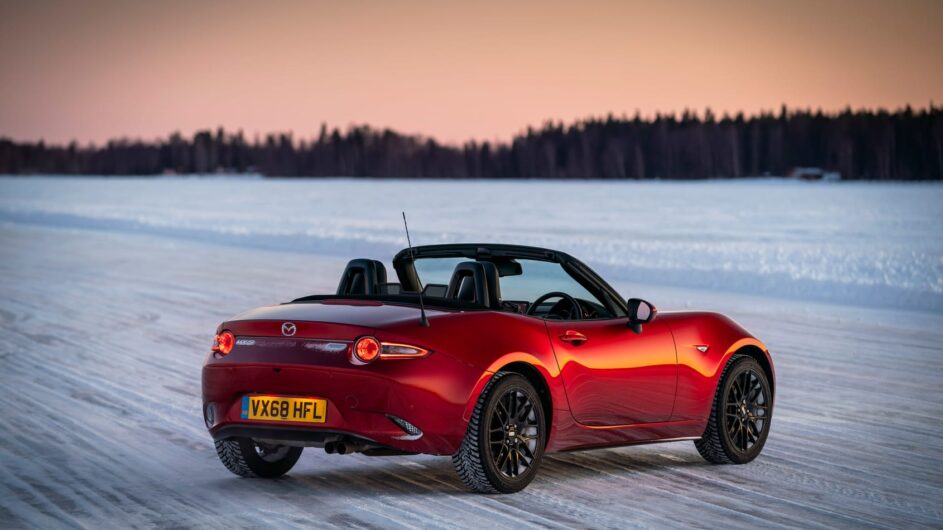
Trim levels rise from SE, through SE-L Nav and Sport Nav, the latter of which adds larger gunmetal-coloured wheels, adaptive lights, leather seats, body-coloured interior trim and other toys, such as a limited-slip differential and Bilstein dampers.
Whereas many before would have said to stick to the basic engine and spec trims, the new 2-litre version, which is available on SE-L Nav trims and up, has undergone a substantial update, and now finally gives the ND-generation MX-5 the powertrain it deserves.
Another addition to the MX-5 line-up is the RF – a folding hard-top version. Rather than having a full convertible like the roadster has, the RF’s roof is more like a targa, with the centre section folding away below two buttresses behind the passenger compartment.
By the time you opt for the 2-litre engine and Sport Nav trim, pricing rises to $30,000. At this point the range of possible rivals widens too – notably including the $33,250 Toyota GT86 and $32,800 Subaru BRZ. Each has more power than the Mazda – though little extra performance to show for it – and a sharper chassis that may appeal if you’re willing to sacrifice the Mazda’s open top.
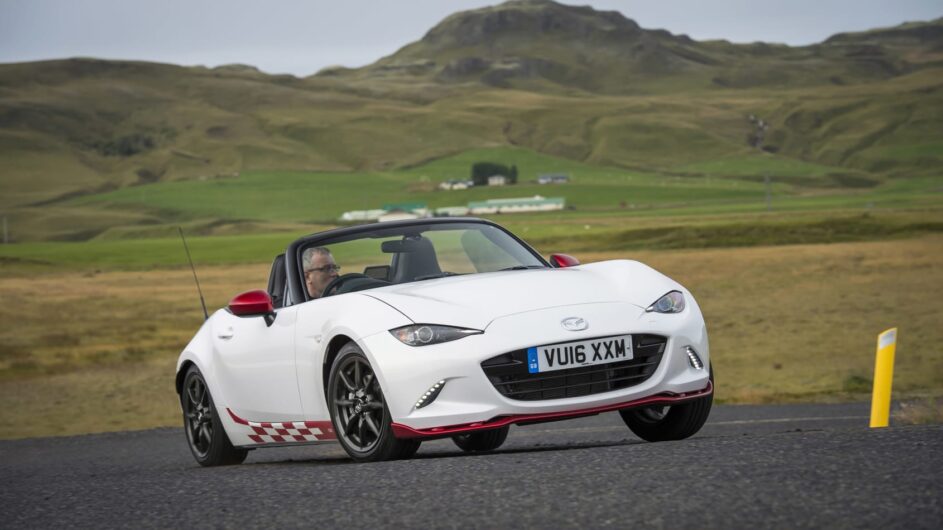
Thanks to the lack of real performance focus at the top of the range, there is a strong argument to suggest the sweetest new MX-5 is the cheapest one, to major on the simple pleasures of a roadster. At $23,270 the entry-level 1.5 SE feels like plenty of smiles-per-pound, even though it lacks the firmer dampers and limited-slip diff available further up the range.
The latest significant addition to the MX-5 line-up is the RF, a folding hard-top version. Rather than having a full convertible like the roadster, the RF’s roof is more like a targa. The centre section folds away below to two buttresses behind the passenger compartment.
Performance and 0-100kph time
As of the 2019 model year update late last year, Mazda introduced a heavily updated 2-litre four-cylinder engine. Overall the engine is similar to the last one, but now produces a more substantial 181bhp, and revs 500rpm harder at the top end too.
This extra performance is not only by feel, but on paper the numbers are now far more impressive too, the new 2-litre reaching 100kph in 6.5sec, a 0.4sec improvement over the previous 2-litre model. But the new 500rpm-worth of revs is just the start of the new 2-litre’s improvements, as rather than being strained, the new engine relishes revs, even if it lacks the outright, hard-hitting top-end punch of a VTEC. It sounds much better too, with a twin-cam engine note under hard acceleration that evokes classic naturally aspirated sounds one might usually associate with days gone by.Latest deals from Buyacar
Combine this with the MX-5’s lightweight chassis and small footprint and the new 2-litre models feels genuinely quick in a way the previous versions never did. Build some revs and drop the clutch and it will rip superbly controlled burnouts, and this is an MX-5 remember, not an M3… in the wet, this hooliganism is multiplied.
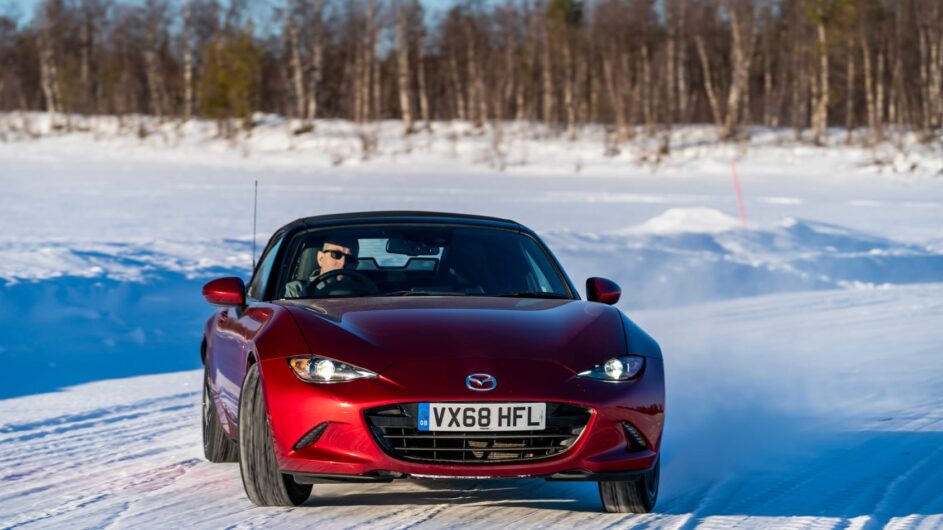
The 1.5-litre car dismisses the 0-100kph sprint in 8.3sec, while top speed is 204kph. But the 1.5’s performance differs more than the numbers suggest, feeling revvy and fun, but undeniably slow. The 1.5-litre car needs working – it’s particularly noticeable on steeper hills when you’ll need a downchange to maintain momentum, unlike the 2-litre car which charges up unhindered.
Being heavier it’s no surprise the RF is marginally slower than the soft-top version. The extra 40kg that the 1.5 MX-5 carries around means that it accelerates from 0-100kph in 8.6sec – 0.3sec slower than the regular car.
Engine and gearbox
Both of the MX-5’s engines are from Mazda’s current selection of Skyactiv units, but they have both been revised for use in the sports car. The old, entry-level Mk3 MX-5 used a 1.8-litre MZR engine, but that has been replaced by a 1.5-litre motor that weighs 14kg less. Compared to this engine’s use elsewhere (it’s available in the Mazda 2 supermini), it features revised cam timing, lighter rotating parts, a custom steel crankshaft and new intake and exhaust systems, while retaining the 4-2-1 exhaust manifold.
The 1.5-litre MX-5s dip under the magic ton at 975kg without a driver (2-litre cars weigh an extra 55kg), which helps to offset the rather effete 111lb ft of torque, generated at a lofty 4800rpm. With peak power of 129bhp generated at 7000rpm, it’s obvious that this engine will need to be worked hard. And so it proves, but as long as your expectations aren’t set too high it has plenty of appeal.Latest deals from Buyacar
The new 2-litre, as mentioned previously, has undergone a substantial update on the previous unit, with a nuanced and technical approach, such as delicate weight savings to the pistons and conrods, revised camshafts, exhaust valves, injectors, throttle valves and a new intake. All of these subtle changes make a huge difference though, with the new engine having far more urgency at high revs, leaping to its 7500rpm

Both engines share the same six-speed manual transmission, which has a wonderfully short, mechanical action. Directly poking straight out of the transmission, there’s an acute physical connection between the gearbox and your left hand, passing through vibrations and movements as the whole powertrain moves on its mountings. This is by no means a criticism, but a pleasant reminder of what is becoming a very rare combination of a longitudinally mounted, rear-driven sports car with a manual transmission.
The box’s ratios feel much better suited to the bigger, torquier 2-litre engine. You spend much more time trying to keep the revs in the very top portion of its range in the 1.5, so if a gear causes the revs to drop too far the smaller engine’s performance deficiencies become glaringly apparent.
But the wonderful gear change and responsive engine, matched by excellently spaced pedals, mean that changing gear is a pleasure in itself – especially heel-and-toe downchanges. Although you have to stir the ’box constantly in the 1.5, it’s no real chore to do so. In fact, you make almost as many changes with the 2-litre, just for the fun of it.
There is an automatic gearbox available, and it comes with steering wheel-mounted paddles, but it is only available on the RF.
Ride and Handling
Much like its rivals the Toyota GT86 and Subaru BRZ, the Mk4 MX-5 has been passionately designed and developed around a theoretical concept: in this case, to offer interaction and a sense of speed and fun for everyone. As part of that, the car has been set to initially roll heavily when a steering input is made, and to lean on the outside tyres. The settings also cause it to pitch and squat a little more than you’d expect when the brakes and throttle are used too. This may well give a strong impression of speed, but it can be disconcerting because the initial impression is of a wallowing, somewhat vague car.
The MX-5’s real limits as a challenging performance car start to show when the going gets rough though. It’s all down to the chassis, which for all its lightness suffers in terms of stiffness, or rather the lack of it. Barrel down a broken B-road and the structure shudders and wobbles, as the chassis struggles to contain the impacts coming in from the suspension.Latest deals from Buyacar
The springs really should iron out smaller bumps and road intrusions, but instead the brittle dampers transmit this noise into the cabin. Wheel control is also compromised, as the wheels have a tendency to crash into road irregularities.
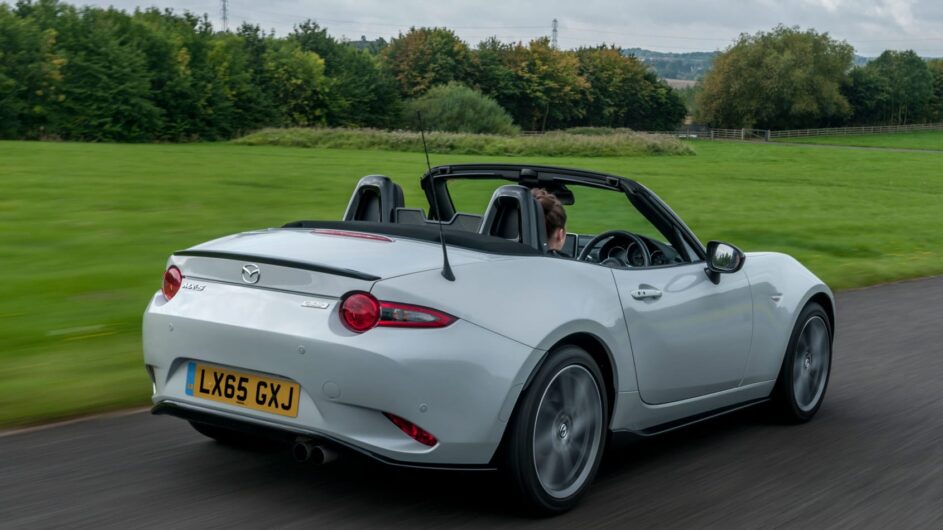
This MX-5 is the first of its ilk to use electric power assistance for the steering, and while the engineers have succeeded in making it accurate, predictably it doesn’t possess the more natural weighting and progressive responses of the best hydraulic racks – or indeed its sweet-steering predecessors.
An acceptance of the car’s limitations, plus a calm, precise driving style, suit the MX-5 much better. Only 2-litre cars have the limited-slip differential (and a strut brace), as it’s the only one of the two that you’d expect to have enough grunt to worry the rear tyres. Actually, the excessive roll means that the 1.5’s inside rear wheel is easily unloaded and has a tendency to spin in tight corners, even in the dry.
The 2-litre won’t slide around extravagantly in the dry, and the large body movements soak up tamer attempts to unsettle the car, but if you’re committed enough, or on a circuit, it will transition into oversteer cleanly. The MX-5’s more potent top end also adds a new layer of throttle adjustability, the engine more easily overwhelming the rear grip threshold.
The soft suspension does make gathering the slide up a less elegant proposition though, and extreme forces can still confuse the chassis. This isn’t just an issue when being a hooligan; braking late, high cornering speeds and large amounts of throttle can also create a disjointed and scruffy driving experience. The lack of an LSD in the 1.5 means it is even more unpredictable if you do provoke it into a slide. Having said that, it’s possible to corner at neutral or mild oversteering angles at sane speeds in either version.
Dial back your efforts and calm your inputs and both can be very satisfying to drive, but it’s easy to push too hard and lose the rhythm that makes them so pleasing. On unfamiliar back roads, where you aren’t confident of the severity or direction of the next corner, where you need a car that will respond just as you expect, the MX-5 is in its element. Without committing to a corner too eagerly you can get on the throttle early to manipulate the rear axle and constantly adjust your line right through to the exit.
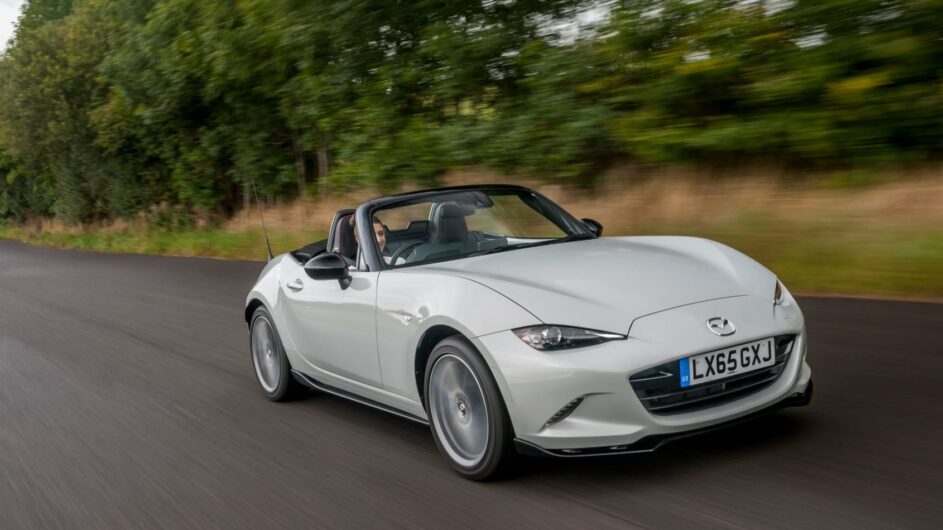
Sport specification brings Bilstein dampers on the 2-litre version, and this is undoubtedly the most potent machine in the range. However, they do make for a firm ride, which particularly on urban roads sends a tremor through the MX-5’s structure. In fact, all models – despite Mazda’s best efforts – betray their open body in the way they react to poor road surfaces, although the ride improves greatly at speed. The fancy dampers provide more control and allow you to drive the MX-5 harder, but it’s still possible to push it out of its comfort zone even on the road.
Mazda has gone to great lengths to make the RF feel exactly the same as the roadster to drive. The extra weight of the folding roof has been compensated for by using revised springs, dampers, anti-roll bars and rear suspension geometry.
The bulkier roof has also increased the car’s structural rigidity, but Mazda felt that it changed the balance of the car too significantly so one of the lower chassis braces has been altered to allow more twist. Despite sounding counter-intuitive, there’s no denying these changes have worked as it really does feel very much the same to drive.
Driving the two cars back-to-back reveals the RF has a slightly stronger shell. However, rough roads will still transmit vibrations into the cabin. It also resists roll ever so slightly more, but it really is practically identical to drive.
L/100km and running costs
Mazda’s focus on reducing weight hasn’t just affected the performance and handling – it’s improved fuel efficiency too.
Naturally, some of that is down to the introduction of a 1.5-litre engine – the smallest yet in an MX-5, and itself a result of the lightweight body giving less mass for a smaller engine to push along. The upshot is
A year or two ago
The brawnier, heavier 2-litre model isn’t quite as frugal on paper, but opting for the speedier car won’t empty your wallet at an eye-watering rate either. Combined economy drops to only 6.9L/100km, with a corresponding increase in CO2 to 161g/km ($600 for year one VED and $175 in subsequent years). However, as you don’t need to rev the 2-litre as much and you don’t use full throttle as often as in the 1.5, the gap in L/100km is much smaller between the two cars in real life. Our recent long-term MX-5 RF regularly returned figures in the 40s.
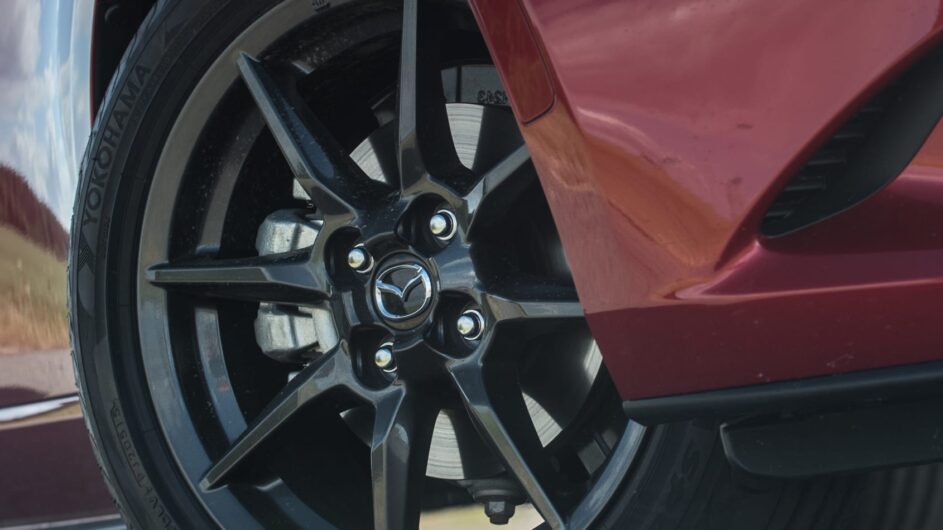
In theory,
Other consumable items should be devoured at a similarly modest rate. Insurance should also be relatively low, though not as low as it could be if the little Mazda was equipped with some of the electronic safety systems that grant a full five-star Euro NCAP rating. The MX-5 instead gets four stars.
Interior and tech
The MX-5’s interior has always been a squeeze for taller drivers, and the ND’s is no different. The cabin is both quite narrow and short, meaning drivers with generous proportions in either direction will find the MX-5 a little challenging.
This is only exacerbated by the seating position, which despite the generous drop on entry, still sits too high in relation to the rest of the cabin. It’s not likely helped by the compact dash and low windowline, but it still feels like the ideal hip point is probably an inch or so lower than the seat can go, making one feel almost perched atop the MX-5, rather than nestled within. The seats themselves are also disappointingly flat and unsupportive.Latest deals from Buyacar
Once inside though, the cabin design is a marvel of contemporary minimalism, essential controls are reduced to a bare minimum and those that remain are clear and easy to use. It does lack the opulence of Mazda’s newer cabins, such as in the new Mazda 3, but remains a strong element of the MX-5’s overall package.
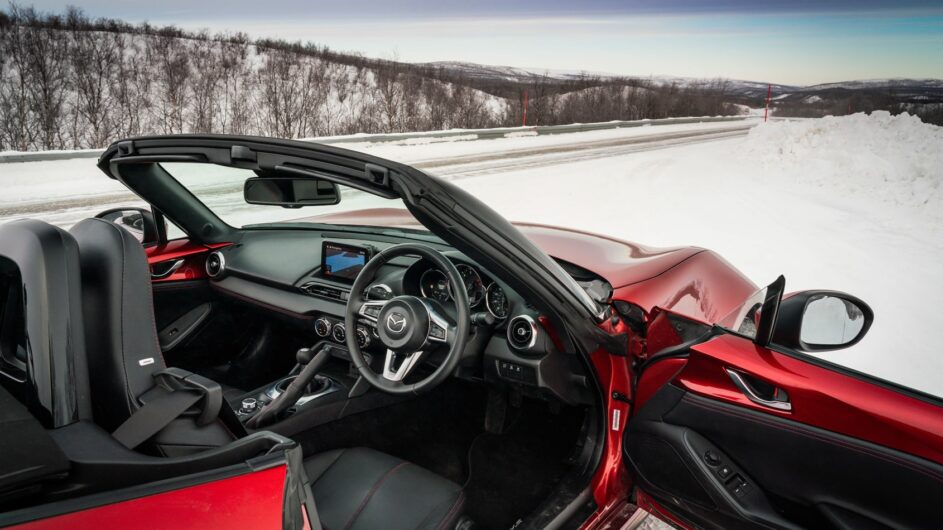
On the move, the experience inside is dominated by two perfectly formed elements. The first is the round, thin and firm steering wheel that looks and feels perfect in the hands, and the other, three perfectly placed dials in front of you. The left-hand dial is one solid colour screen in high-specification models, and although it doesn’t have a huge amount of functionality, it re-emphasises the work Mazda has been putting into its detailing.
The infotainment system is also rather good – maybe not up to the standards of the very best German units, but far superior to anything else from Japan. CarPlay and Android Auto are now also available as an option. A higher-res screen in the dash would be welcome, but as the MX-5 is now one of the older models in its range, it’s not surprising to see it a generation behind Mazda’s latest electronic hard and software.
Most models have a black interior in cloth or leather with red stitching and highlights on the dash and doors, but plump for GT Sport Nav+ models and the interior changes regardless of exterior colour. RF models feature a saddle brown interior, while the roadsters pick up a cornsilk-like beige finish. This does clash with some exterior colours, especially when butted up against the body-coloured door panels, but it does make for a lighter and less cramped-feeling cabin. If you’re upset by completely mismatched stitching, the pinky-red design on the steering wheel and handbrake and cream stitching on the seats and door cards will grate.
Design
We’ve had a few years to absorb the current MX-5’s design, and as Mazda continues to produce groundbreaking mainstream models like the latest Mazda 3, the MX-5 has bedded down into a taught, highly considered and elegant little roadster.
Curvaceous yet dramatic corner cutaways, slim LED lighting units and simple, yet bold graphics – these are all highly distinctive elements that make the MX-5 look and feel special on the road, regardless of its price point and relative commonality.
It’s not entirely flawless (the car sits a little high, especially on the smaller 15-inch wheels, and it can look a little awkward from some angles), but overall, the MX-5 is an artful expression of modern Japanese design in a very Mazda way.Latest deals from Buyacar
The RF’s targa-like roof, with those massive buttresses and body-coloured windscreen surround and roof, doesn’t look quite as resolved. The basic proportion set makes the one-piece look of the RF’s body seem tall and narrow, but we imagine a set of horizontal louvres on that rear deck might be an interesting addition; we’ll leave that to you to imagine.
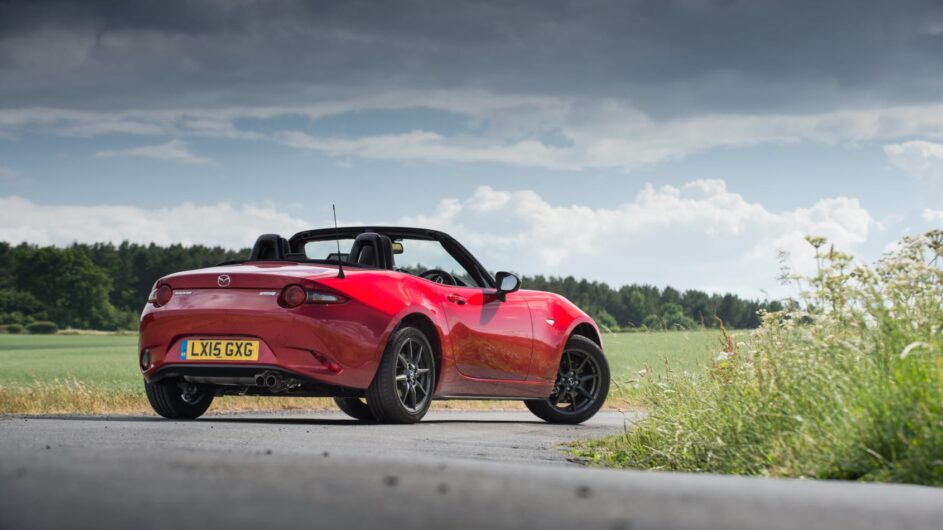
On track
The characteristics that define the MX-5 on the road are equally distinct on track, where there’s no great change to the driving experience. It’s much of the same, except all the sensations are heightened and exaggerated, for better and worse.
The consistency of the control weights makes it easy to acclimatise yourself to the small roadster, so you can focus on clipping apexes and nailing braking points without having to attribute brainpower to managing tricky, unintuitive controls.
The car’s exaggerated body movements are even more empathic on track, feeding back clear messages through the seat of your pants.Latest deals from Buyacar
Trail the brake into a slow corner and you sense the weight shift forwards as the nose dives, and you can use this movement of mass to help rotate the car on entry to get the nose tucked in tight.
Once turned in, the body leans hard onto the outside wheels and the car settles. From here you get back on the throttle as the corner opens out. Be gradual with your input and you’ll understeer. However, be more aggressive with the throttle and the car adopts a neutral state, squatting and bobbing over the rear outside wheel as it powers out of a corner – an enjoyable feeling.
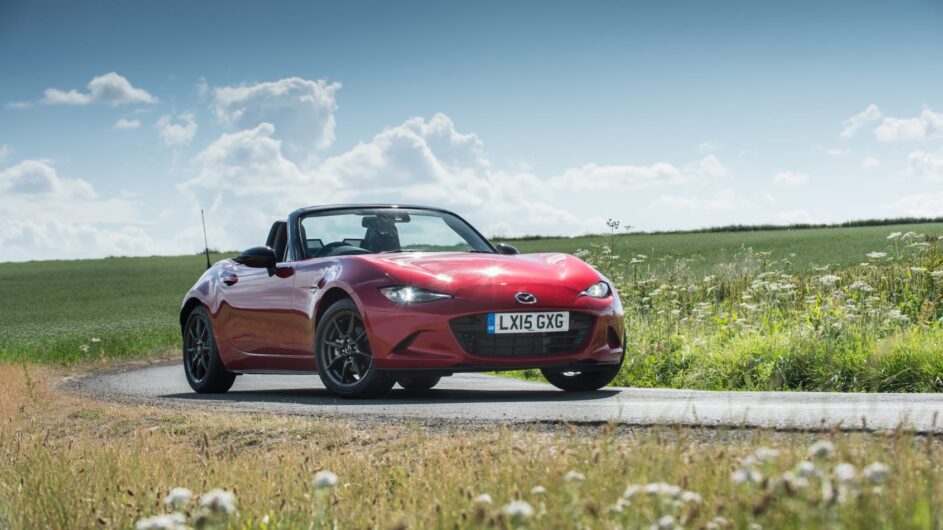
You can use both the Mazda’s body roll and consequent shifting of mass to exploit the chassis’ natural balance, especially in tighter sections of a track. Lift off suddenly mid-corner and you feel the car start to pivot around its hips under weight transfer, taking on a few degrees of slip-angle in the process, which is easily neutralised with the throttle and a dab of countersteer. On the whole, it’s all very manageable, and thoroughly enjoyable.
However, the softer, road-going bias does leave the MX-5 wanting when you’re really pushing for a fast lap as opposed to just indulging in the chassis’ adjustability. That exaggerated roll breeds greater inertia, so you don’t have the confidence to negotiate high-speed direction changes at full tilt, where you crave tighter body control and more agility. The flat, confident cornering stance of track-bred cars is certainly something unfamiliar to the MX-5.
A light kerb weight means the brakes feel up to the job of hauling the MX-5 down from speed and they hold up well enough over the course of a session, although if you’re considering doing regular track work it may be worth investing in new lines and fluid at the very least.
This article originally appeared at evo.co.uk
Copyright © evo UK, Dennis Publishing

